15 January 2021
By portermathewsblog
via domain.com.au
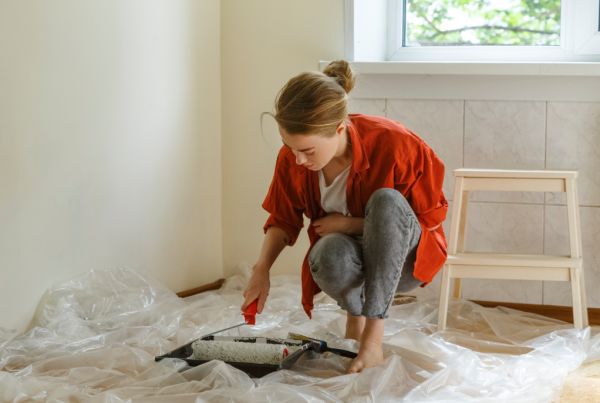 A few simple tweaks can make your space feel brand new. Photo: Stocksy
A few simple tweaks can make your space feel brand new. Photo: StocksyThere’s something about the flip of a calendar page that makes us want to reinvent ourselves – and our homes. And having spent more time indoors this past year, fittingly we’ve turned our attention inwards – to transform where we live.
We asked the experts – interior designers, stylists, architects, real estate agents and more – how to make easy home upgrades to create a relaxing, connected and inviting space.
- Repaint your front door
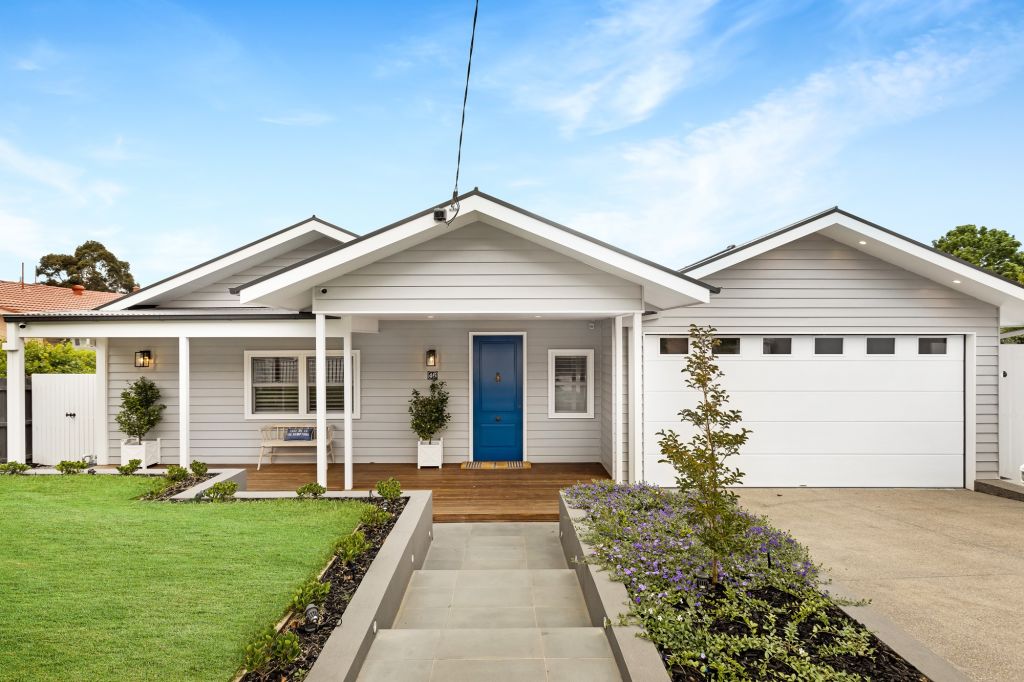 New year, new front door. Photo: Cranberry Design
New year, new front door. Photo: Cranberry Design
“There’s nothing like arriving home to a little joy,” says Wendy Davey, principal of Cranberry Design. “Consider this year’s Pantone colours, sunshine yellow and gray.”
- Declutter
For an immediate result “unpack everything, give it a good clean and then only put back what you really love and use”, says interior designer Meredith Lee.
- Frame and hang your art
“Well-framed art is essential,” says stylist and decorator Claudia Stephenson. “It doesn’t matter if the art is thrifted or painted yourself, professional framing makes it look a million bucks.”
- Mix contemporary and vintage
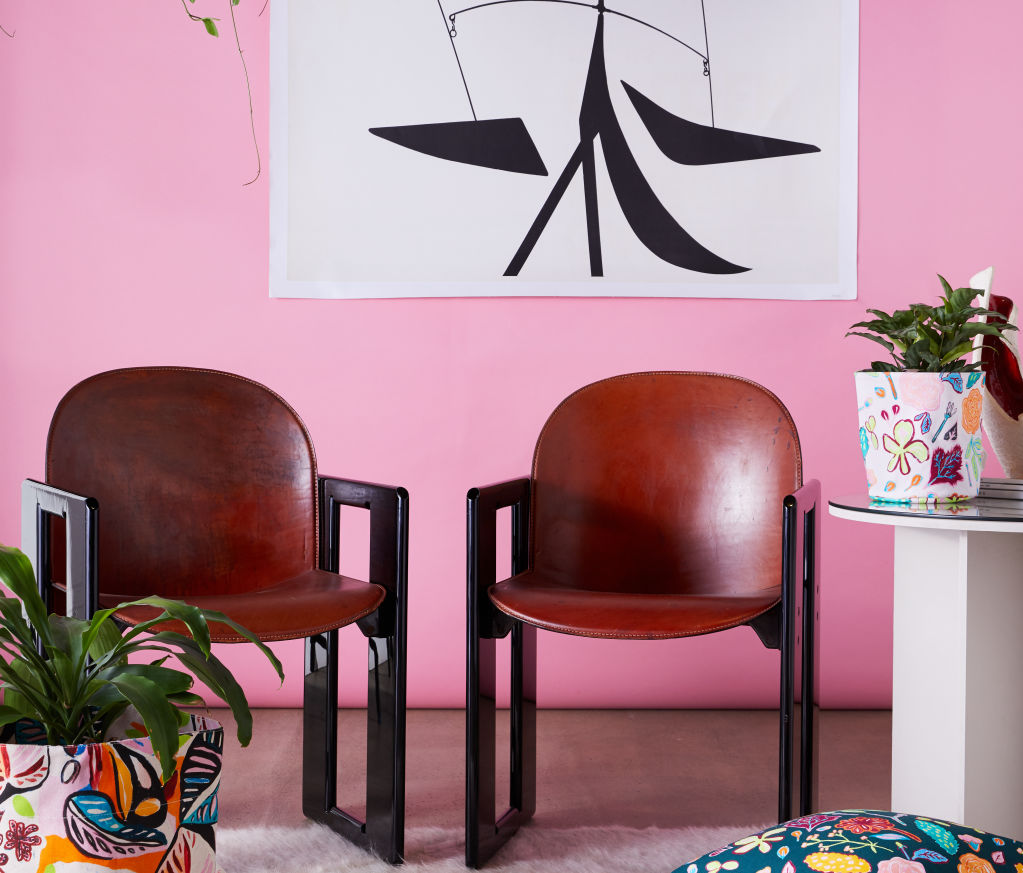 Vintage and contemporary pieces work well together. Photo: Gorman
Vintage and contemporary pieces work well together. Photo: Gorman
Match a family heirloom with a store find that catches your eye, says interior designer Danielle Brustman. “Contemporary and vintage furniture talk to each other and can reflect the rich tapestry and history of our lives and the way we live.”
- Be clever with storage spaces
Whether in the roof, under the floor or integrated into larger rooms, make storage a priority, says William Blake, of Blake Studios, especially if “the house needs to grow older with younger families”.
- Refresh your paint
Painting both the interior and exterior can have a huge impact, says interior designer and decorator Jasmine McClelland. “Dulux’s website has some wonderful colour combinations, which give a visual before you take that first step. Or get a colour consultant out to give you even more confidence.”
- Follow the rule of three
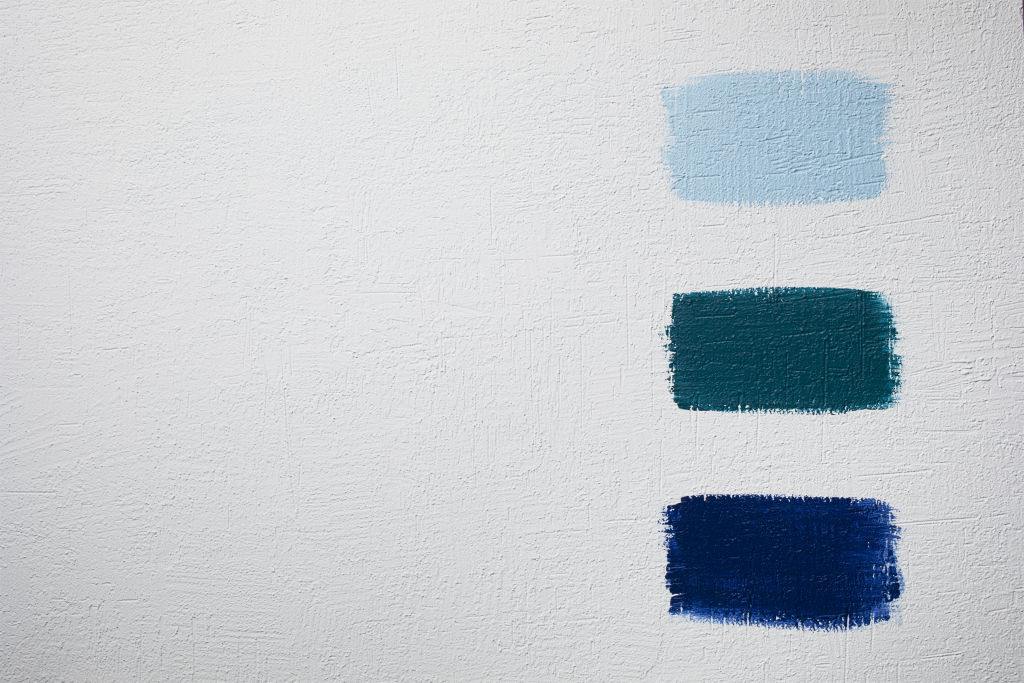 Try before you buy. Photo: Haymes Paint
Try before you buy. Photo: Haymes Paint
While on painting, “always try out at least three variations on the colour you think you want before you commit”, says Stephenson.
- Get in a fresh set of eyes
When you’ve lived in the same home for a while you stop seeing things, says Lee. “Get in a trusted friend, or design professional, and you might find some new solutions to old problems.”
- Fix the small things
Keep works manageable by regularly updating those simple things you habitually overlook, says principal at Garwoods Estate Agents, James Garwood. “Painting skirting boards and door frames, balustrades and the insides of your balcony, offer the easiest uplift.”
- Connect to the outdoors
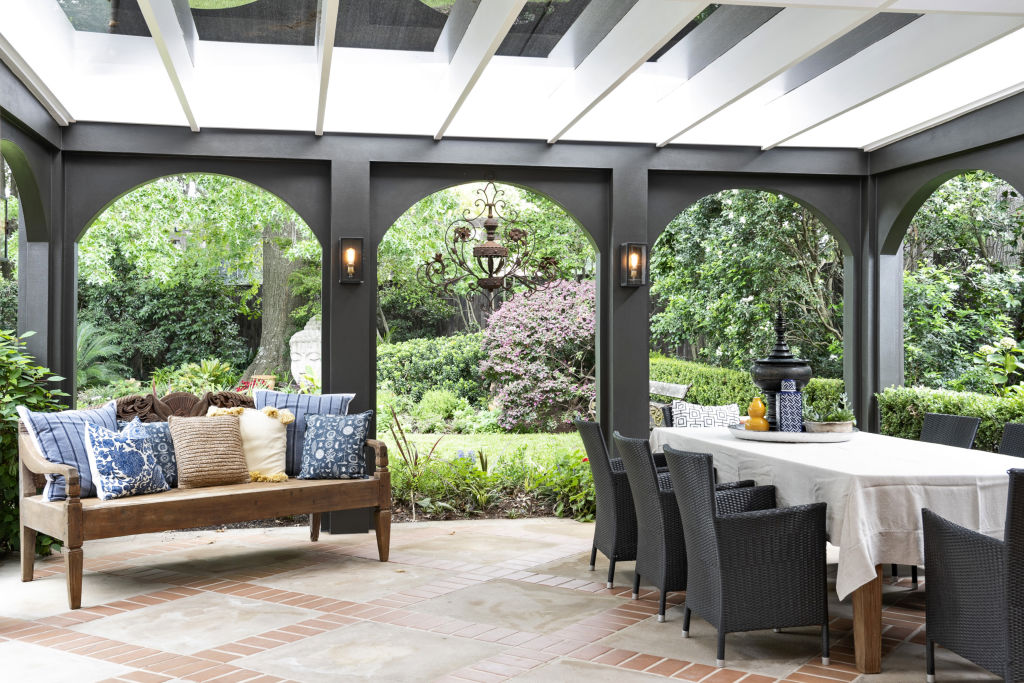 A functional outdoor space can act as an additional room. Photo: Supplied
A functional outdoor space can act as an additional room. Photo: Supplied
“Using large doors and windows can effectively create an additional living area, especially when the sun aspect is considered,” says Blake.
- Refresh your outdoor space
Add new cushions, a striped beach umbrella and an outdoor drinks trolley, says Davey, while for winter she suggests a fire pit, “so small groups can chat and feel connected”.
- Invest in the best home accessories you can afford
“Gorgeous velvet pillows filled with duck down will last forever, while a Dinosaur Designs vase or bowl for the coffee table will add texture and pattern,” says Stephenson.
- Add some bathroom curves
They create a welcoming and nurturing effect, says Brustman. “Adding a few curved lines to your design will soften a bathroom in the subtlest of ways.”
- Landscape your garden, rooftop or balcony
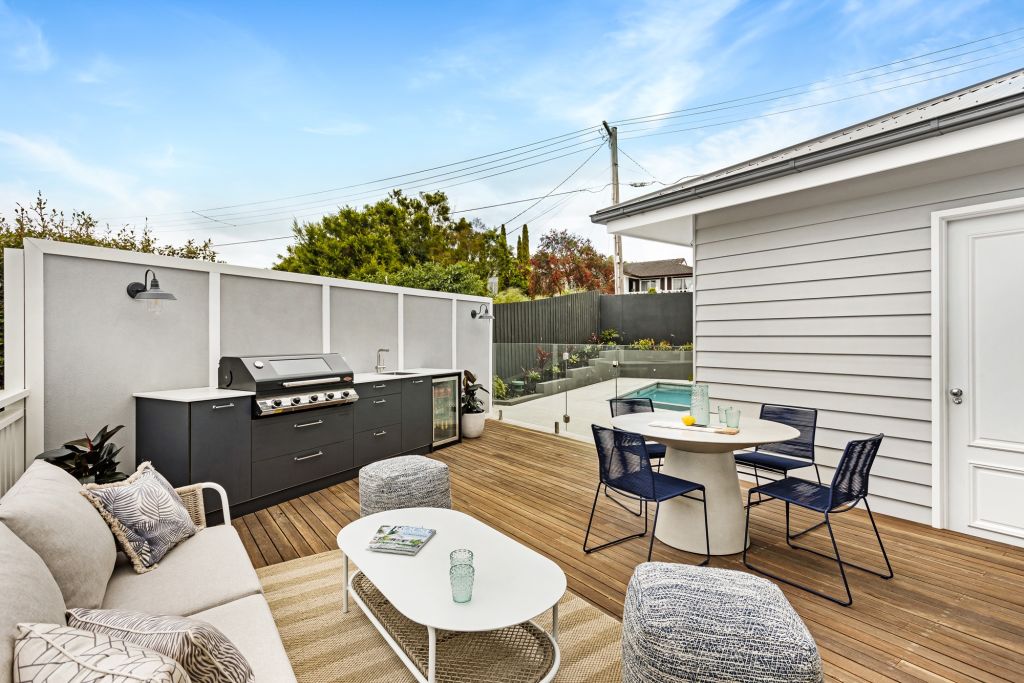 Figure out how you want your outdoor space to work for you. Photo: Cranberry Design
Figure out how you want your outdoor space to work for you. Photo: Cranberry Design
Hire a professional for a purpose-built design, says McClelland. Ask yourself: Do I want an outdoor kitchen/living space? Multiple sitting spaces for entertaining? A sanctuary to retreat to? “Get the landscape team to turn it into a reality, or with some hard labour, make it happen yourself,” she says.
- Think about lighting
Fix outdated fixtures, bulbs and switches, says Garwood. “Installing a dimmer can also create ambience especially for entertaining.”
- Re-do your bedroom
Create that holiday/hotel feeling at home with “a gorgeous new feature bedhead and bedlinen”, says Davey.
- Make colour updates
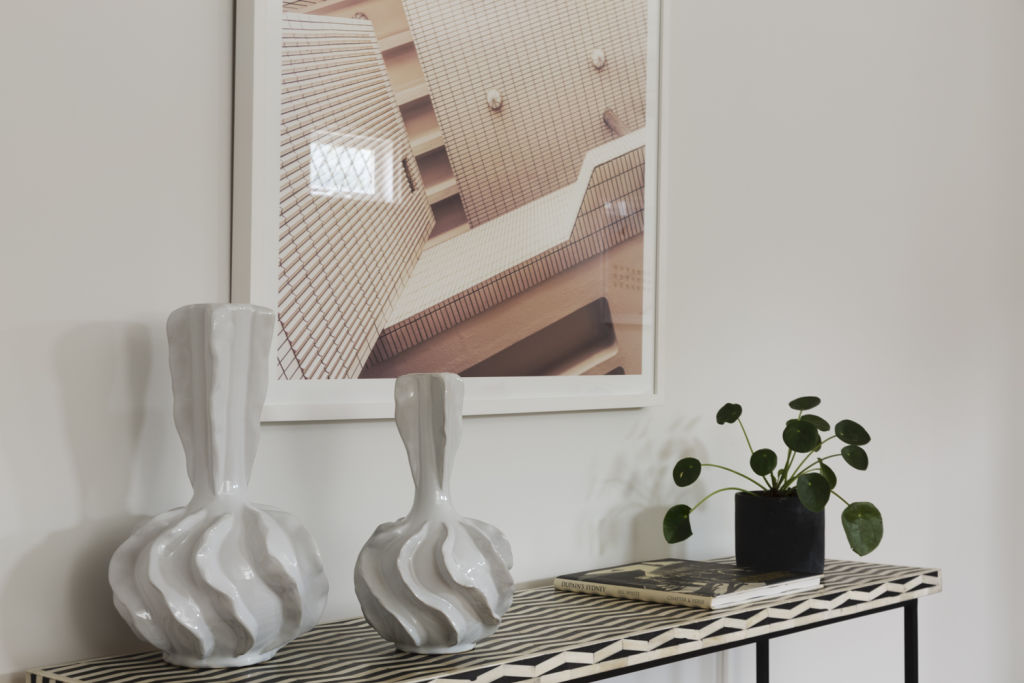 Update your accessories to stay on trend, advises Meredith Lee. Photo: Elizabeth Schiavello
Update your accessories to stay on trend, advises Meredith Lee. Photo: Elizabeth Schiavello
“Interior colours are like clothes, they regularly change, and rooms date when trends move on,” says Lee, who recommends smaller accessory switches for a fresh look.
- Add a ceiling fan
“A great way to cool the house and increase ventilation, that’s far more cost-effective than air-conditioning”, says Garwood.
- Update textiles
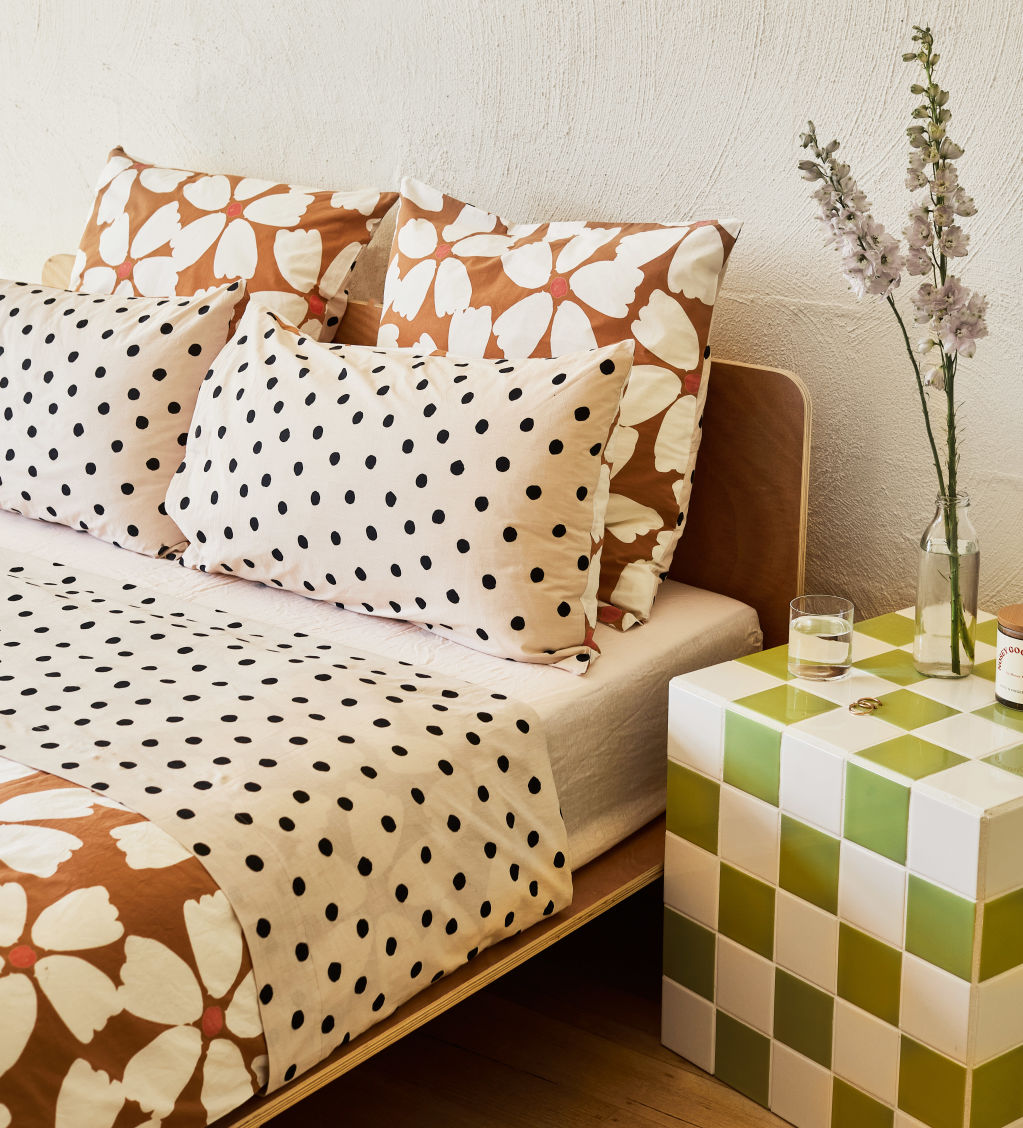 Updating your bedding is an easy way to give the room a refresh. Photo: Supplied.
Updating your bedding is an easy way to give the room a refresh. Photo: Supplied.
Think throws, rugs, cushion covers, bedding, towels and more, says McClelland. “It never disappoints and gives a home a new energising lease on life.”
- Add colour to your timber joinery
Stain your timber with slightly muddy tones says Brustman, adding “character and mood to help create a warming and elegant atmosphere.”
- Install skylights around entries, stairs and voids
These areas can benefit from natural light throughout the day, says Blake. “Just refrain from using them in bedrooms and retreat spaces.”
Comments (0)
05 February 2020
By portermathewsblog
via domain.com.au
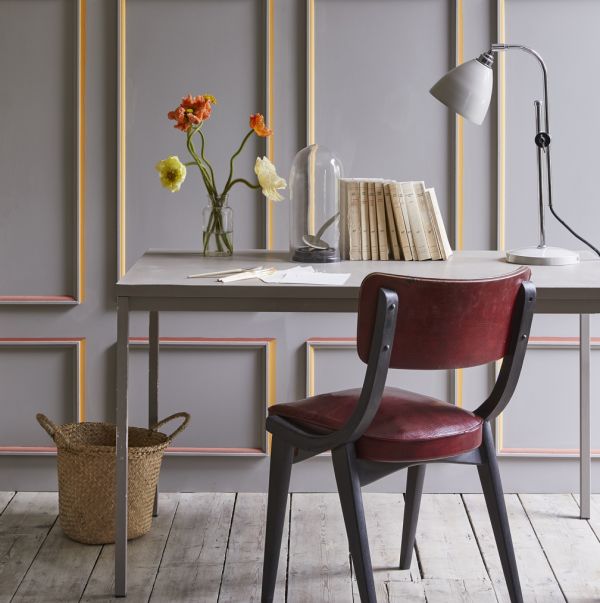 Get ahead of the curve by dipping your brush into 2020’s most coveted colours Photo: Annie Sloan
Get ahead of the curve by dipping your brush into 2020’s most coveted colours Photo: Annie Sloan
Looking to update your home? Fresh colour is an easy DIY and affordable way to up-style any home.
Get ahead of the curve by dipping your brush into the most coveted colours and steal these insider tips for the perfect painterly refresh, inside and out.
Lilac, pale pink and mint
Why: “With neutral colour schemes dominating the last few years, it’s time for some soft, subtle hues,” says designer Justine Brown from Chocolate Brown. “They complement neutrals and tie back with on-trend pale timbers, terrazzos and marbles beautifully.”
Where: A wash of mauve, rose, blush or mint adds colour and whimsy, and lives easily in any space as a neutral or pretty backdrop. “Introduce via your bed linen and soft furnishings,” says Brown. “Combine with tarnished brass or try a mint green laminate with pale timber and white cabinetry in the kitchen.”
We love: British Paints Lilac Lies, Dulux Mint Twist, Chalk Paint in Paloma.
Expert Tip: “These colours work harmoniously together,” says colour and paint expert Annie Sloan. “Add a stronger hue to prevent them looking too sweet, or white for contrast. For boldness, introduce yellow, black and white, or incorporate pastel floral fabrics for an English Countryside look.”

‘I love dirty mustard tones with pale timbers and concrete.’ Photo: Robert Walsh
Vibrant yellow and mustard
Why: “Yellow is so uplifting,” says Brown. “I love dirty mustard tones with pale timbers and concrete.”
Where: Yellow works anywhere and suits all furniture, artwork, and decor. It even works in kids’ bedrooms for a space they won’t outgrow. “It’s fabulous with tarnished brass bathroom fittings,” says Brown. “Or layer with blues, pinks and whites in the bedroom.”
We love: Dulux Dandelion Yellow, British Paints Yellow Mania, Porters Paints Amber.
Expert tip: “Mustard takes neutrals one step further in terms of depth,” says Brown. “It’s the perfect addition if your palette is looking bland.”
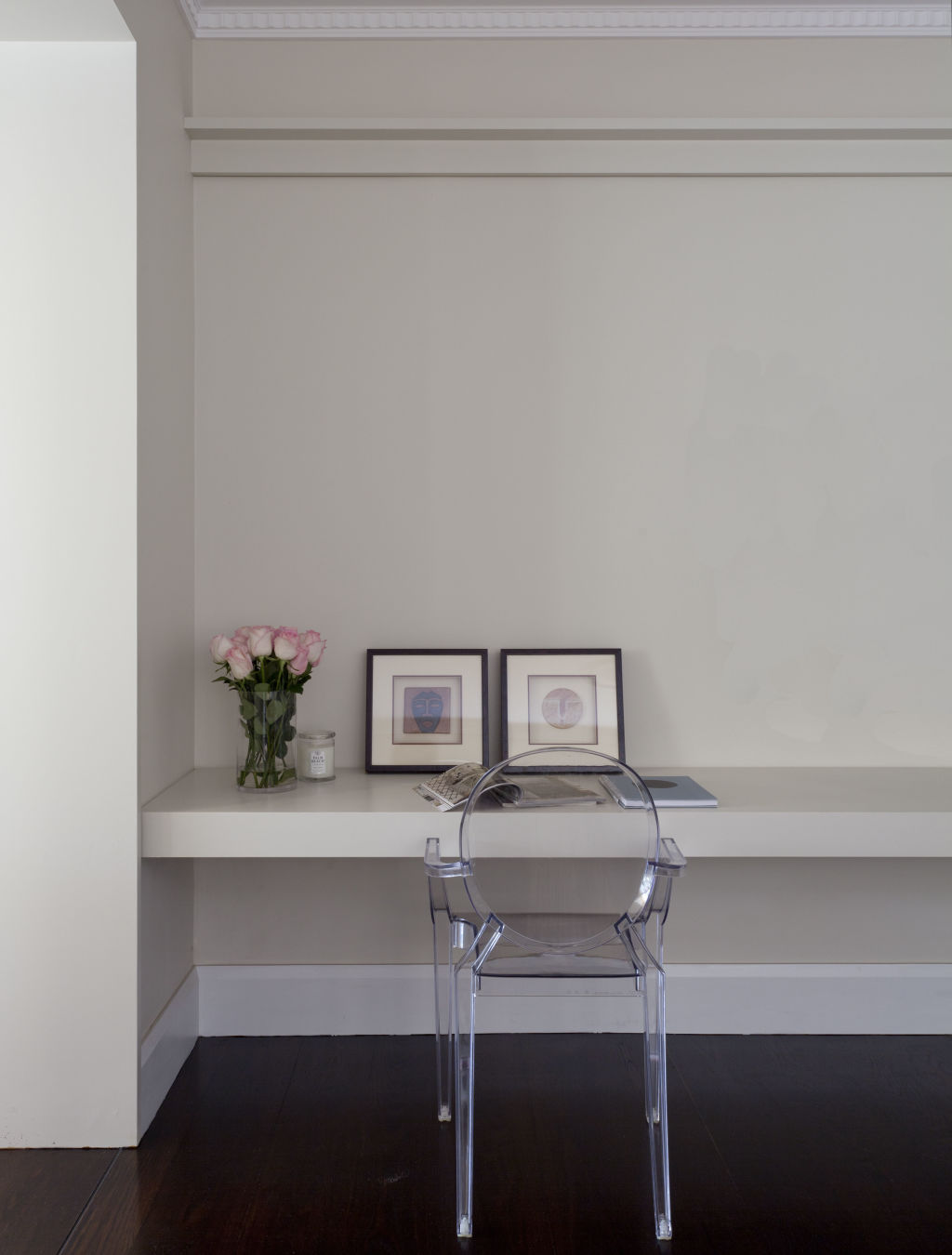
When the correct tones are applied, this is a palette that can be applied inside and out with ease. Photo: Felix Forest
Greige
Why: With grey on the wane, the combination of grey and beige provides fresh sophistication. “Greige evokes calm and stillness,” says designer Madeleine Blanchfield. “It’s subtle but gives the impression a space has been thoughtfully decorated. It’s warm without being overwhelming.”
Where: Greige looks beautiful with classic white trims or applied from top-to-bottom for real luxury. “It’s the perfect neutral and foil to add colour to,” says Sloan. “It works in most rooms and looks brilliant with reds, pinks and greens. It sits elegantly in the background, allowing colours to pop out from it.”
We love: Porters Paint in Grey Pepper, Chalk Paint in Country Grey
Expert Tip: “Taking photos of the beach and gardens allows us to pick colours within the greige spectrum,” says Blanchfield. “We use these natural tones to find a closer match in different paint ranges.”
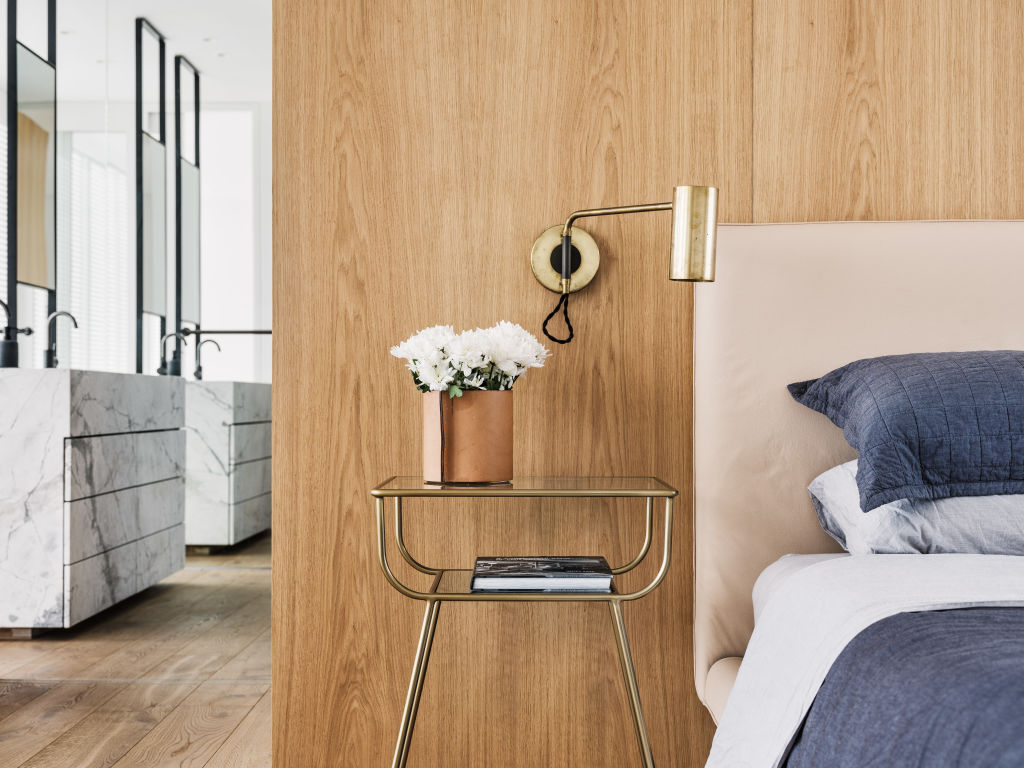
A wash of mauve, rose, blush or mint adds colour and whimsy. Photo: Robert Walsh
Earthy tones
Why: Rich and moody, this palette provide an effortless connection between interiors and outdoors.
“Orange, red, tan and brown feel grounding,” says designer Nickolas Gurtler. “They feel good to live with because they are characteristic of nature which is always constant in our lives,”
Where: When the correct tones are applied, this is a palette that can be applied inside and out with ease.
“For opulence, choose dark unsaturated tones,” Gurtler says. “You can manipulate these colours to do almost anything.”
Expert Tip: Choose different shades and fine-tune the mood of your room. “Select one hue and use its multiple tones in different textures,” says Gurtler. “Be sparing or go bold. Both work.”
We love: Taubmans Barrel O Rum, Delta Clay
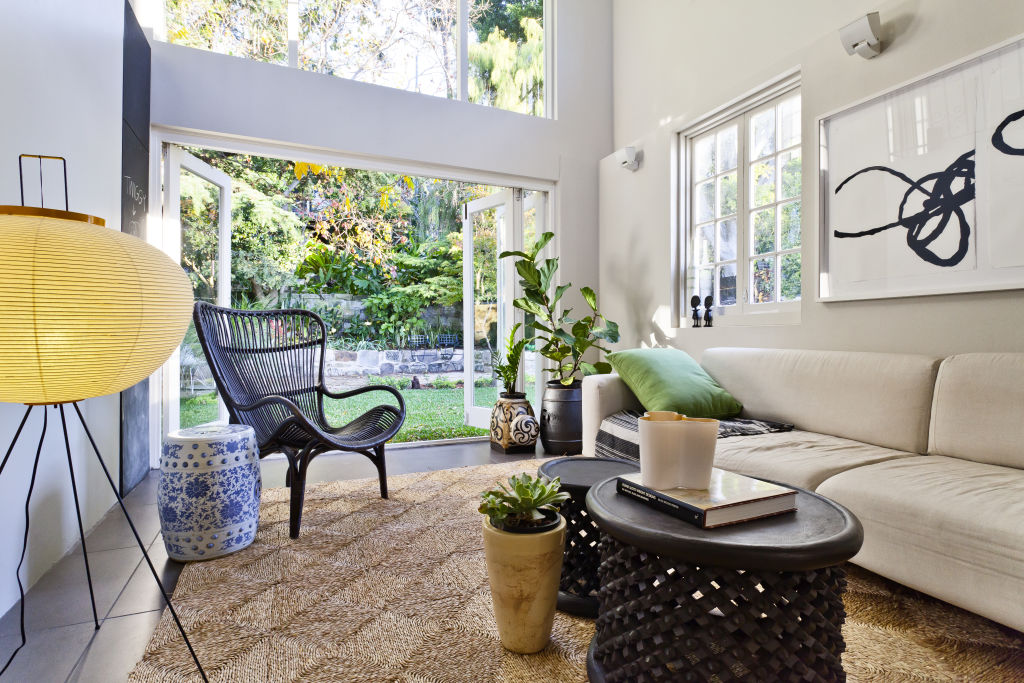
From grassy shades to desert hues, green delivers impact whilst feeling soothing to live with. Photo: Felix Forest
Back to nature green
From grassy shades to desert hues, green delivers impact while feeling soothing to live with.
Why: “Green is soothing and honest, or opulent and luxurious,” says Gurtler. “It depends on how it is used.”
Where: Apply everywhere, from walls and doors to pots and cabinetry. “I like green in the bedroom, bathroom and living spaces,” he says.
Expert Tip: High-gloss finishes provide luxury and impart a soft glow by bouncing light around a space.
“Combine deep hues with black, white and brass for opulence,” suggests Gurtler. “Unsaturated greens, like eucalyptus, pair well with greys, whites and blonde timbers.”
We love: Porters Paints Cosmos and Nori, Dulux Dinosaur
Comments (0)
13 January 2020
By portermathewsblog
via domain.com.au

The summer break is a perfect time to tackle those neglected DIY tasks. Photo: iStock
There’s no time like the summer break to get around to all those tasks you’ve been meaning to do. Without the busyness of work and general life, focusing on some of those neglected areas of the home means you’ll start the year fresh, updated and accomplished.
It’s key to decide which home DIY projects you’ll invest your time and money into. Are there any that have really been on your mind? What will add value to your home?
Between beach trips and pool-side relaxation, here are some ideas for home DIY that are easy enough to complete over your summer break and won’t break the bank.
Freshen up your interior painting
Anyone can work some magic with the right colours and a paintbrush. With warm weather on the agenda, your coats will dry fairly fast, making it an easy summer fix.
If you’ve got wallpaper to remove, holes or dints to patch, make sure you do that before you start on the painting.
Typically, prep and painting take anywhere from three to six hours per room, depending on the size and direction to the sun.
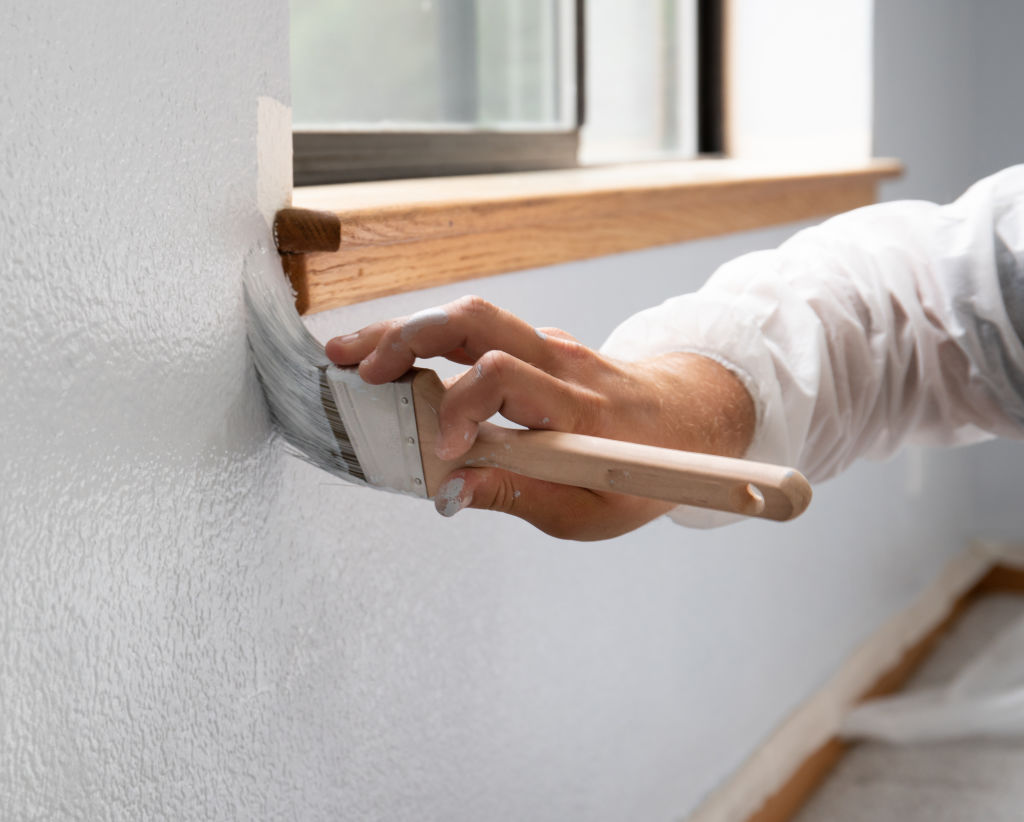
It doesn’t take long to give the walls a fresh coat. Photo: iStock
Planting and landscaping
Who doesn’t enjoy a sunny afternoon in the garden or stroll through the nursery choosing new flowers? Your garden refresh could be as simple as replacing furniture or as complex as constructing an entertainment area.
For the budget-conscious, planting cuttings from friends and family is a great way to get your garden started and add in some new species.
While it can be difficult to estimate the time frame of a landscaping job, small jobs such as replacing furniture or planting could all be knocked over in a day. For larger tasks such as laying pavers or grass, allow a few days.
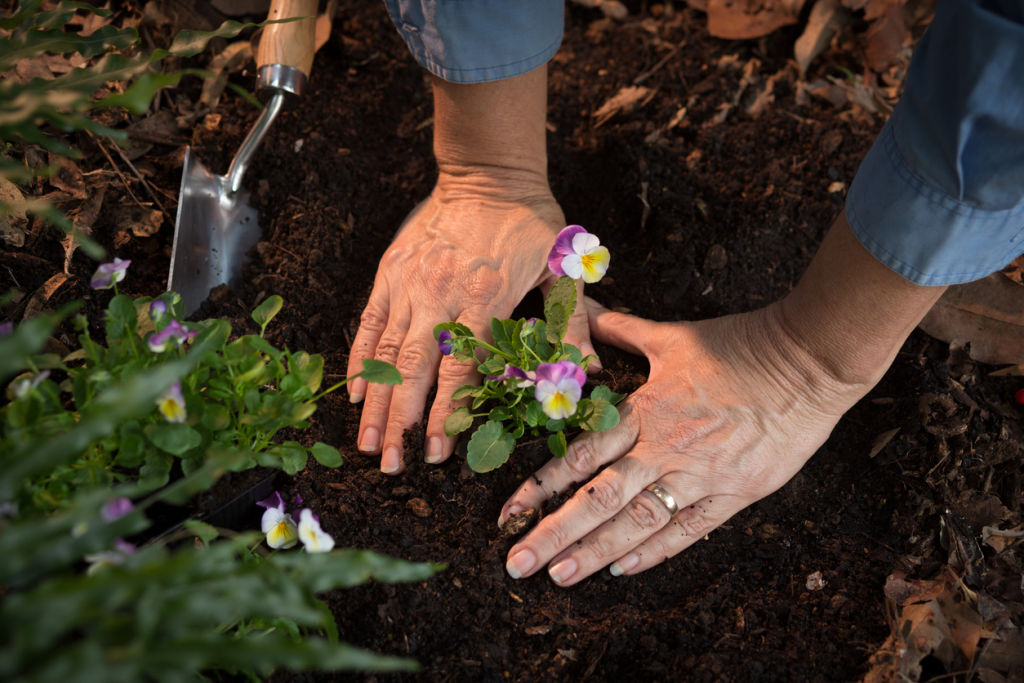 Who doesn’t love an afternoon in the garden? Photo: iStock
Who doesn’t love an afternoon in the garden? Photo: iStock
Re-tiling kitchen splashback
Make sure to weigh up your experience here. Nobody wants to end up with an uneven, less than perfect splashback in their kitchen.
Another thing to pay attention to is the type of tiles you are going to use before you dive straight in. Some tiles are harder to both lay and align.
If you’re unsure but keen to give it a go yourself, YouTube is a great place to gather info, get tips and watch how the professionals do it.
Before you start, make sure you consider the knock-on effect, so it doesn’t turn into a mountain of a job. For example, if your tiles sit behind your benchtops, it will become a much more complicated task. If the colour is quite polarising, will it mean eventually replacing all the tiles throughout the home?
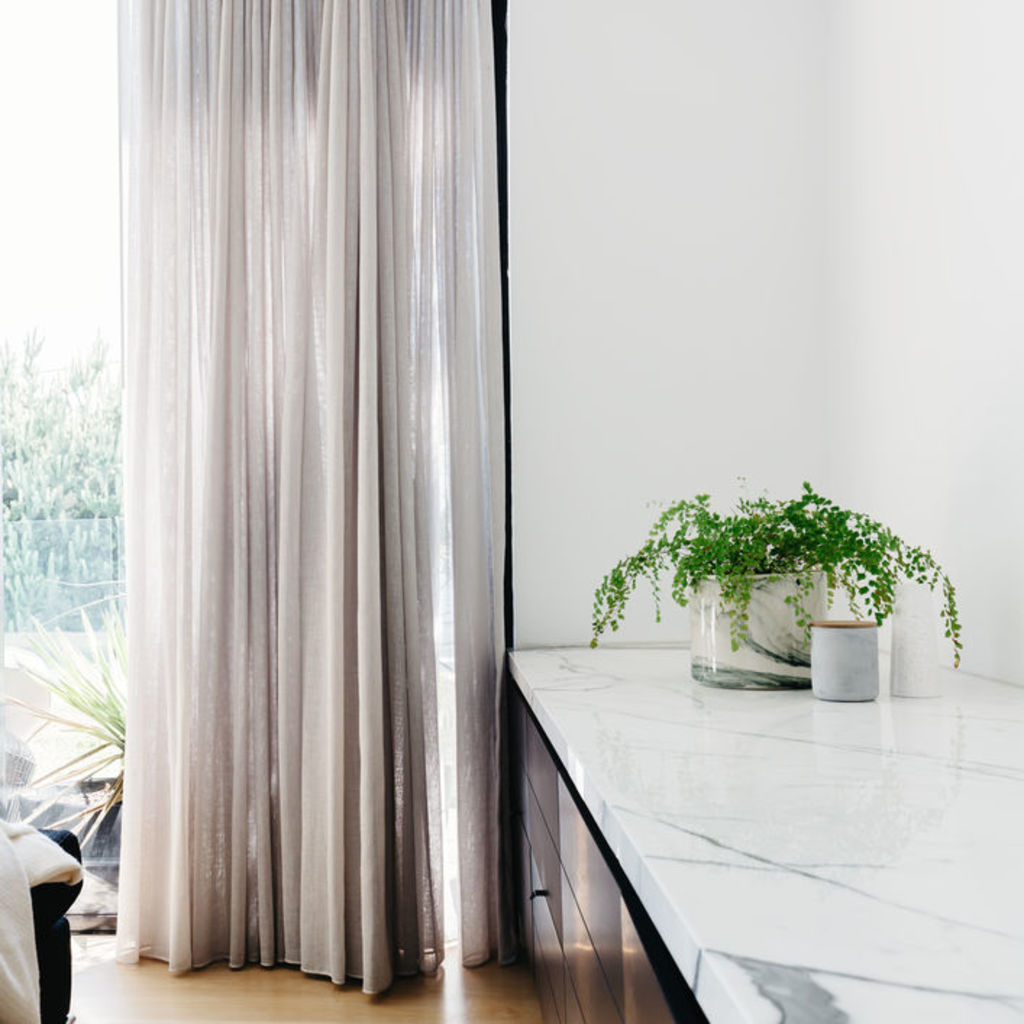 Curtains are an easy way to transform a room. Photo: Stocksy
Curtains are an easy way to transform a room. Photo: Stocksy
Updating the blinds
Blinds have the power to transform the whole room, adding colour, light or texture with minimal effort or costs involved. If you’ve already got tracks in place, then it’s just a case of replacing the curtains, which can be done in half a day.
When it comes to choosing your curtains and the hooks, make sure to seek advice from staff in-store. The different styles of hooks can be confusing, but with the right advice, you’ll be set for an easy DIY task.
Lighting changes
Just like curtains, lighting also has the power to change a room entirely. Lighting can be a statement piece, add ambience and is an economical way of sprucing up the home. Be sure to call on a licensed electrician for any installation that needs to be done.
Comments (0)
24 October 2019
By portermathewsblog
via domain.com.au

Jessica Bellef is the author of the book Individual. Photo: Sue Stubbs.
Do you know what your favourite colour is? Ask a kid that same question, and the answer is instant and unwavering. As adults, we may have forgotten that an allegiance to a certain shade was symbolic of so much when were young.
Declaring a favourite colour was our way of defining ourselves and telling the world what we were about. We requested everything – outfits, bedroom walls, pencil cases, birthday-party decorations – in our chosen chroma. Our hero hues made us happy, even though we were likely to move on to another colour within a month’s time.
Fast-forward to our adult years, and we no longer spend time discussing our favourite colours. Sadly, our personal spaces often lack direct reference to the colours that make us joyful.
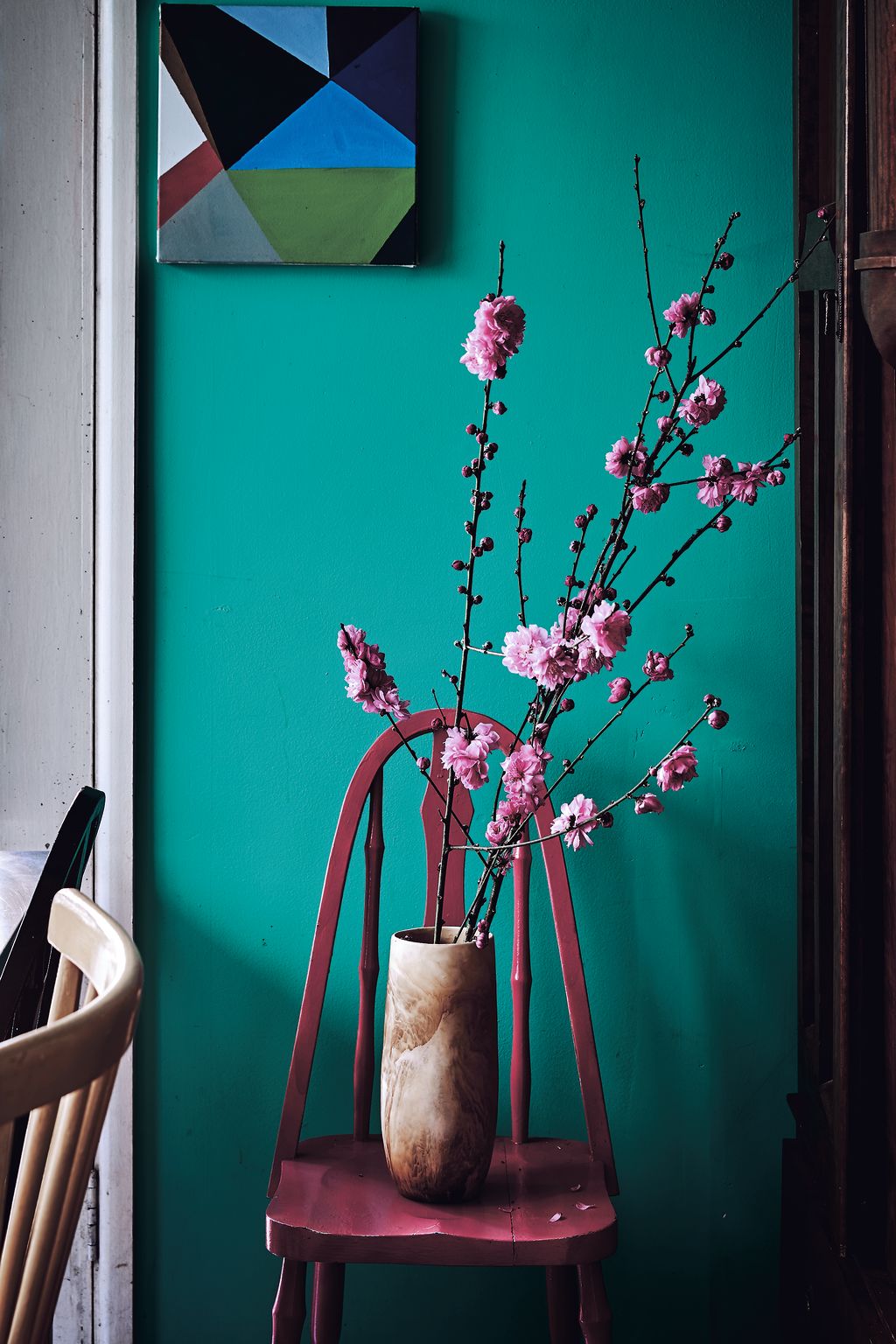 Declaring a favourite colour was our way of defining ourselves and telling the world what we were about. Photo: Sue Stubbs.
Declaring a favourite colour was our way of defining ourselves and telling the world what we were about. Photo: Sue Stubbs.
The thing is, we make decisions every day that unconsciously highlight and reinforce the palettes to which we are naturally drawn. From the clothes in our wardrobe to the food we put on our plate (and heck, even the plate itself), our choices about colour continue to tell the story of who we are.
If our homes work best for us when they reflect what makes us happy, secure and comforted, then shouldn’t we try to inject our own colour palette into the space?
Most interior stylists and designers will tell you that working with colour is the most immediate way to change the mood of a room. Countless articles, workshops and textbooks have delved deep into the technicalities and nuances of colour, breaking the complexities down into rules and prescriptive palettes, and often not leaving room for creative interpretation.
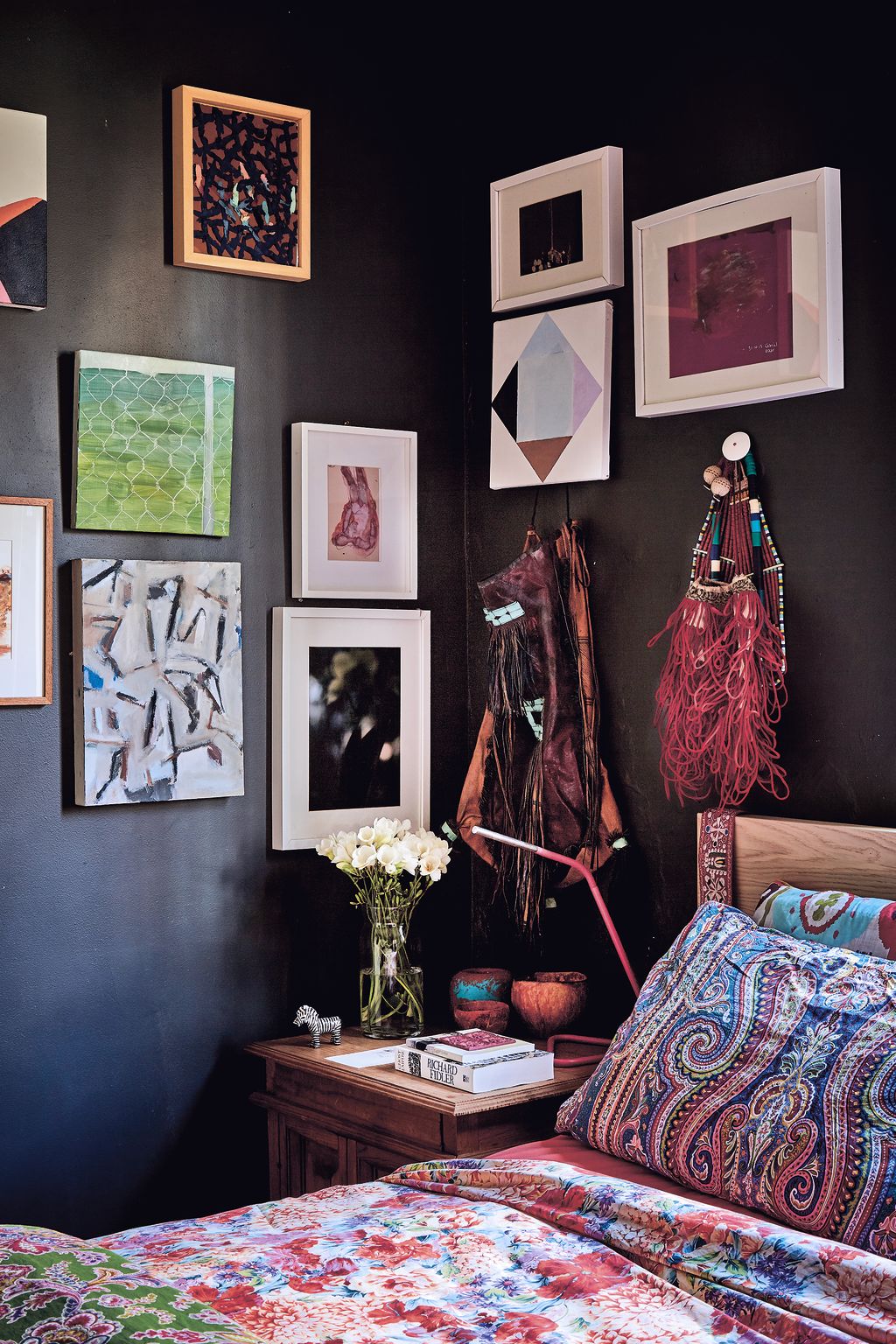 Most interior stylists and designers will tell you that working with colour is the most immediate way to change the mood of a room. Photo: Sue Stubbs.
Most interior stylists and designers will tell you that working with colour is the most immediate way to change the mood of a room. Photo: Sue Stubbs.
It can be a daunting and stifled way to learn about something that is so personal. It’s no wonder that lots of adults are afraid to play with colour in their homes – they’re too scared to jump in and express themselves with paint and decor, fearing that they will get it “wrong”. When it comes to colour, however, it isn’t so black and white.
We all have primal, physiological responses to certain colours that we can’t control. High-energy reds get the heart racing, while soft blues slow us down. We also have very individual thresholds when it comes to how much colour we can take before nausea sets in.
Some people love the feeling of being enveloped in a colour-saturated room, while others would prefer to spend their time in a colour-neutral space.
 We all have primal, physiological responses to certain colours that we can’t control. Photo: Sue Stubbs.
We all have primal, physiological responses to certain colours that we can’t control. Photo: Sue Stubbs.
Our perception of a colour is tinted by our own life story and learned associations. All our memories, positive or negative, will have a connection to colour in some way: the school uniform that was begrudgingly worn, the facade of a crumbling building admired on an exotic holiday, the walls of the dentist’s waiting room.
It is these fragmented moments that form our preferred colour palettes.
We should unapologetically colour our home environments in palettes that are unique to us, in ways that mean something to us. We need to spend a little time thinking about the colours that give us joy, just as we would have done as bright-eyed young things in the school playground.
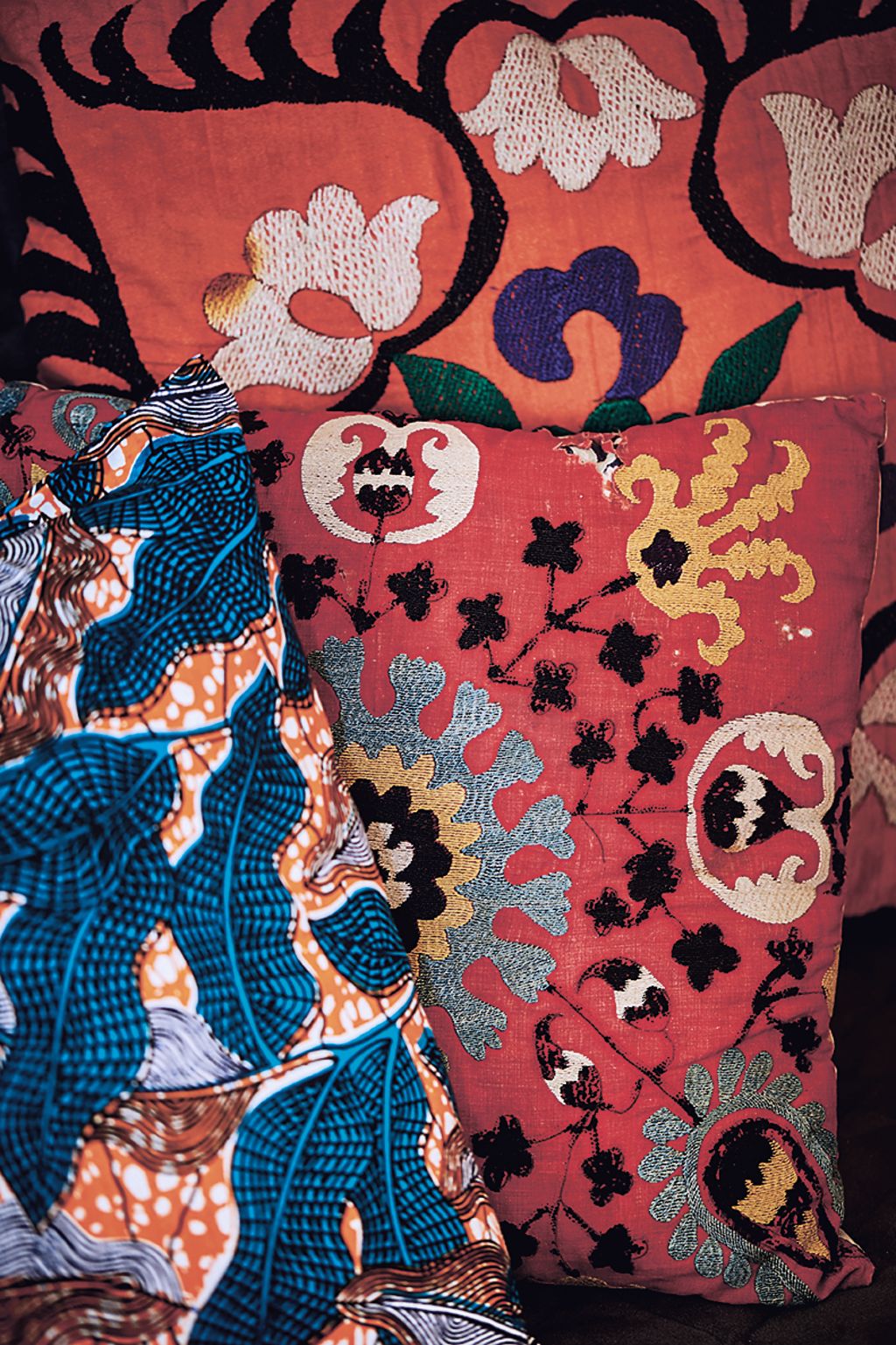 Some people love the feeling of being enveloped in a colour-saturated room, while others would prefer to spend their time in a colour-neutral space. Photo: Sue Stubbs.
Some people love the feeling of being enveloped in a colour-saturated room, while others would prefer to spend their time in a colour-neutral space. Photo: Sue Stubbs.
Colour considerations
These are not rules, but things to think about:
Get in tune with the colours to which you react positively. Recall places and moments that made you feel good, and create a mood board (digital or physical) that represents these memories. Take note of recurring colours and themes.
Adding colour to a room doesn’t have to mean you must paint the walls in vibrant hues. Colour can be added to a neutral-walled room through artworks, textiles and decor, and you can add as much or as little as you want.
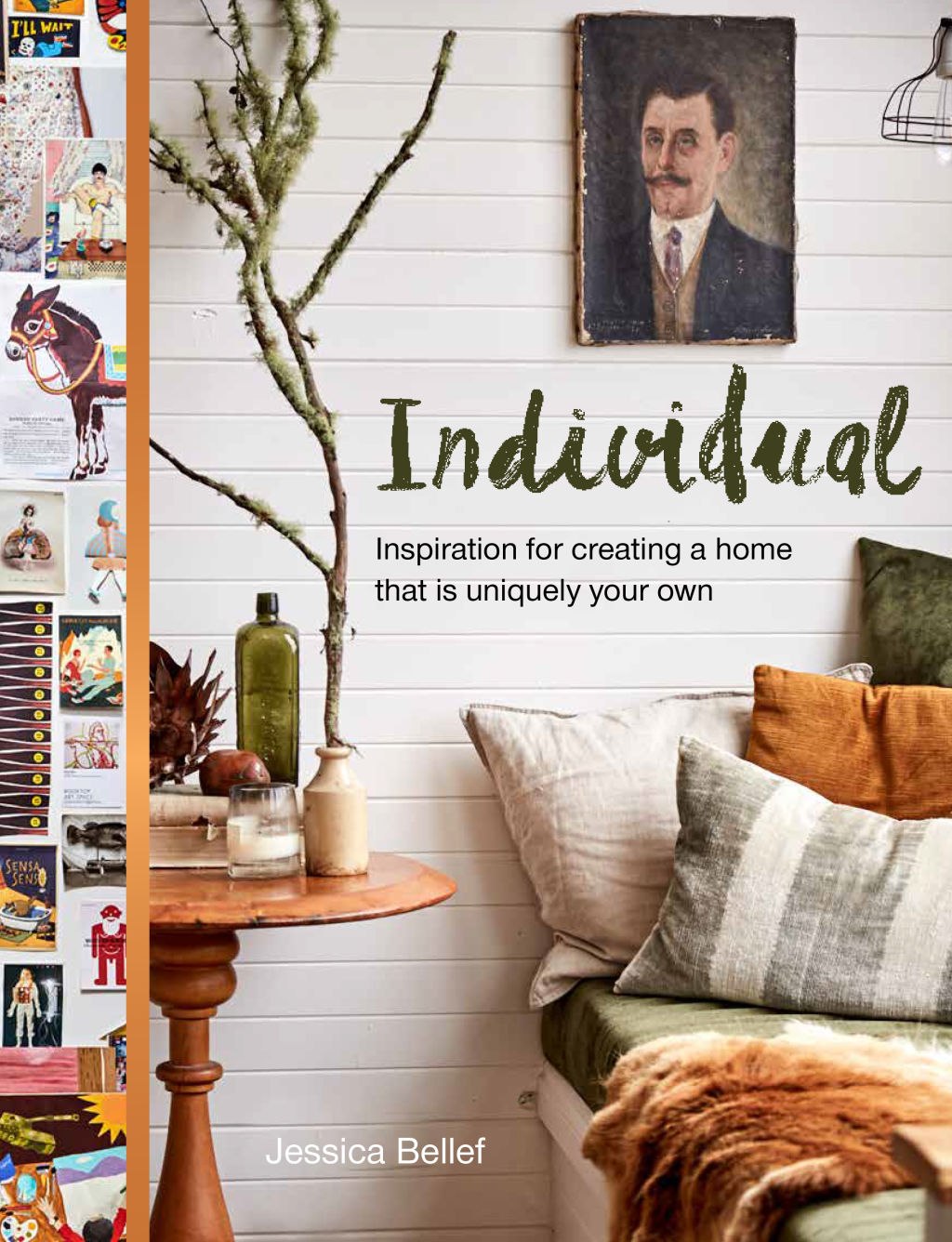 Individual by Jessica Bellef, Murdoch Books. Photo: Murdoch Books.
Individual by Jessica Bellef, Murdoch Books. Photo: Murdoch Books.
Know that you can have too much of a good thing. Overusing one colour in a space will either overwhelm you with its intensity or be so monotonous that you will find the space boring and flat. Play around with a mix of colours in a space until you find a balance that pleases you.
Understand that paint is temporary and decor is easily swapped out. There is no harm in trying new things, as “mistakes” can be erased swiftly.
Observe the scene outside your windows and the way the light works its way through the house. I love having a green quilt cover in my bedroom, as it connects the room to the treetops directly beyond the window, drawing the outside in and grounding me in nature.
Our preference for certain types of colour will evolve as we grow and advance through our life stages. Embrace these changes, and never stop experimenting with colour in your home.
Comments (0)
21 August 2019
By portermathewsblog
via domain.com.au
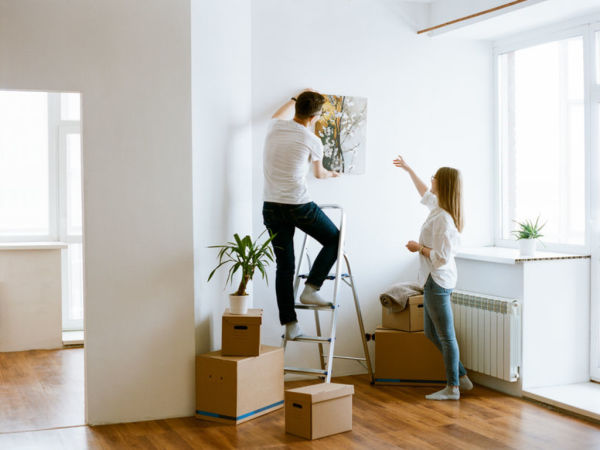
I’ve learnt a few lessons and gleaned good advice from colleagues. Photo: Stocksy
After almost a decade in the same house, I’d forgotten how painful it can be to move.
The sort, the pack, the kids circling around your feet – and, in our case, a stressed cat who marked his territory somewhere but smelt like everywhere – and clearing the last of the household dross before a manic clean.
We would have loved to have outsourced every aspect of the move but budget constraints came into play so we were forced to take on the task ourselves.
In a few months we have to do it again, and this time we’re going to do things differently. I’ve learnt a few lessons and have gleaned good advice from colleagues. This is what we’ve learnt:
1. Hire movers (or rope in friends with beers and pizza) early
We found many of our preferred moving companies were already booked. What’s more, you need to research their costs and reputation. Ours charged on an hourly rate, but once the big hand crossed from 10am we were pinged for the full 60 minutes’ labour.
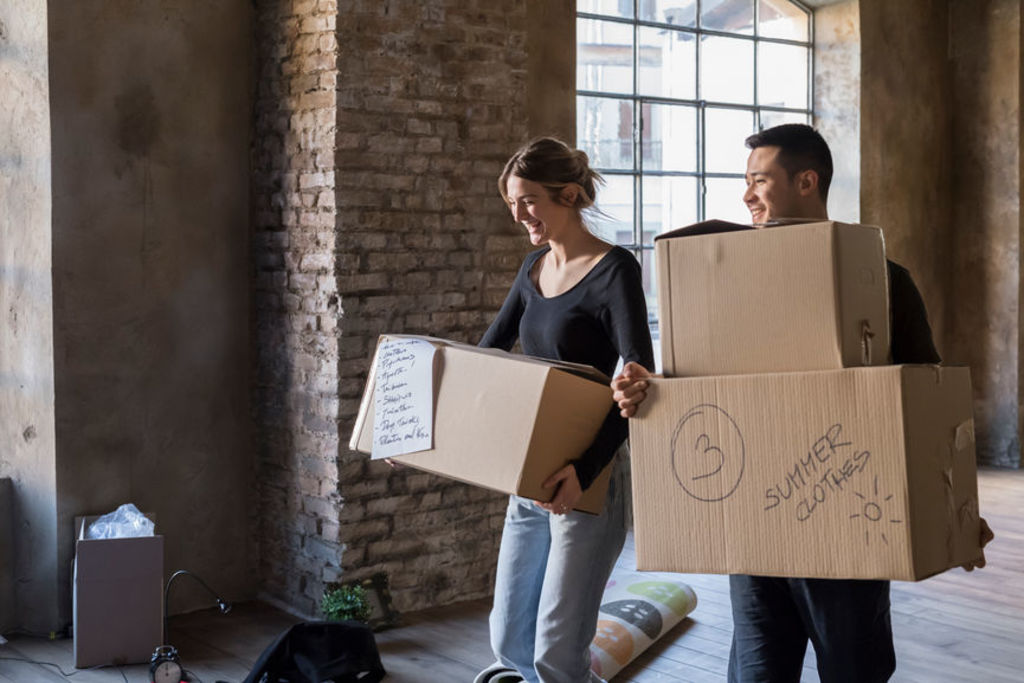 Gather a packing kit early. This includes tape, plenty of boxes and permanent markers. Photo: Stocksy
Gather a packing kit early. This includes tape, plenty of boxes and permanent markers. Photo: Stocksy
2. Change your address details in advance
Contact insurers, the bank, the council and so on. Embrace Australia Post’s mail forwarding service, which will notify some parties like banks, energy and phone providers.
3. Assemble your packing kit
Hoard boxes in many sizes. We were lucky to have a friend who’d recently moved, but also try supermarkets and liquor stores which often have spare boxes available. Cheap but large bags, the type you find at $2 shops, are great for soft big items such as linen, pillows, clothing and rugs.
You’ll also need packing tape, a tape dispenser (no one likes hunting for the start of the roll), bubblewrap or – just as good and more environmentally friendly – old newspapers for wrapping breakable and fragile items. We sorted out our linen cupboard fairly early on and found towels, pillow cases and flannels to be great items to wrap things like wine glasses and plates. Make sure you have a few permanent markers to label boxes.
 Hire movers (or rope in friends with beers and pizza) early. Photo: Jason South
Hire movers (or rope in friends with beers and pizza) early. Photo: Jason South
4. Marie Kondo the hell out of your home
Tackle packing and sorting your belongings with this room-by-room approach almost the moment the house contract is signed. Even if you pack just one box a day during this process, that will ease the pressure on moving day. This is the perfect time to donate or sell that chest of drawers, and rid yourself of excess kitchen equipment or unwanted clothing.
Start with things you don’t really need on a day-to-day basis. Books and trinkets can be packed early. And you’ll be surprised how little your kids will miss their toys.
Tackle the kitchen at the beginning. How many wine glasses, mugs, utensils and cooking gadgets do you really need? Think like a motel owner and leave the bare minimum to make your meals for the next few weeks.
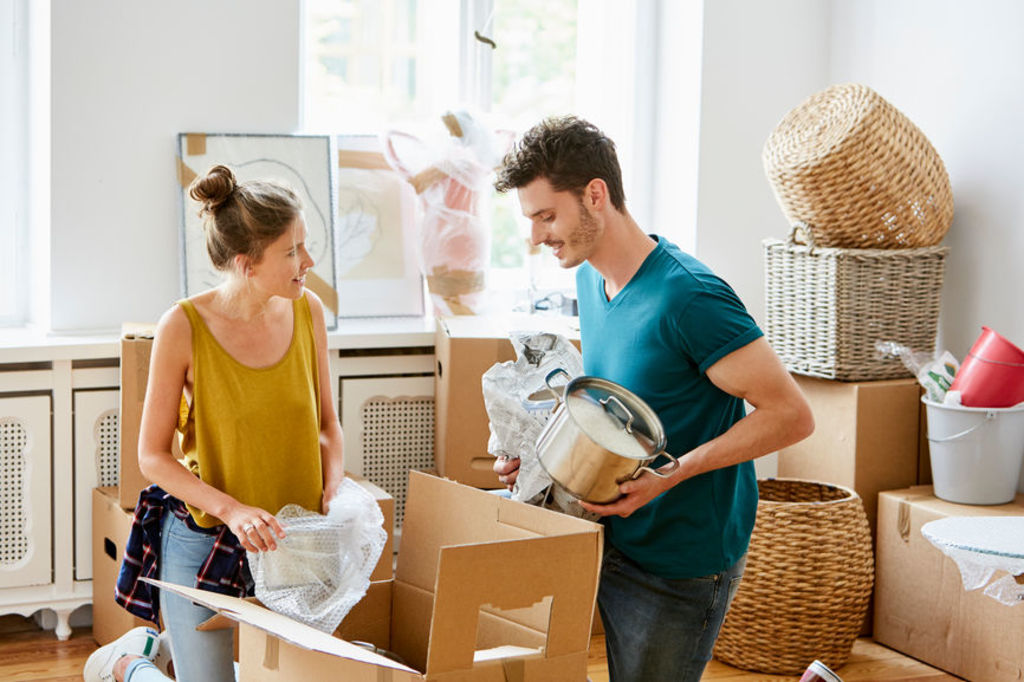 Start organising and packing your home room-by-room almost the moment the house contract is signed. Photo: Stocksy
Start organising and packing your home room-by-room almost the moment the house contract is signed. Photo: Stocksy
5. Colour-code the boxes relating to your rooms
If only we had done this, it would have made things so much easier to find our iron, hair dryer and Alexa – they are still missing …
6. Remove boxes immediately
If there is space, perhaps in a secure garage or basement, start placing the packed boxes away. This clears the house, and stops the urge to break into them to hunt for something later. If this isn’t an option, pack a full room or clear a large space where boxes can be left untouched.
7. Clean as you pack
Vacuum behind the beds, and give the doors and cupboards a wipe down – this will save time and effort on moving day.
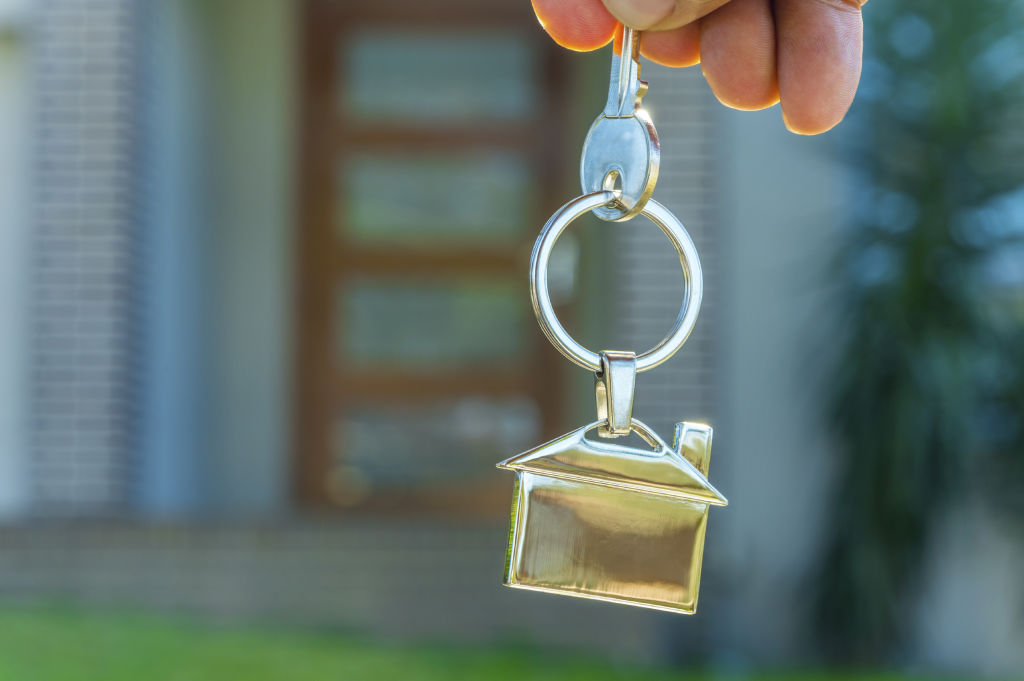 Always designate a special place for your house keys. Photo: iStock
Always designate a special place for your house keys. Photo: iStock
8. Pay someone to clean the oven
If your budget stretches to any outsourcing, let it be for this. Cleaning the oven is a crappy job at the best of times, let alone at one of the most stressful. I can think of little worse than wiping oven cleaner and scrubbing metal racks on the evening we left. Awful.
9. Eat your way out of your home
Refrain from big grocery shops in the weeks leading up to your move. Try to use whatever you’ve got on hand, which will make the move (plus the cleaning of the fridge, freezer and pantry) all that much easier.
10. Stuff, seal and shut drawers
There’s no need to empty your clothing drawers. Get as much in them as possible, then simply seal them shut and ship them off.
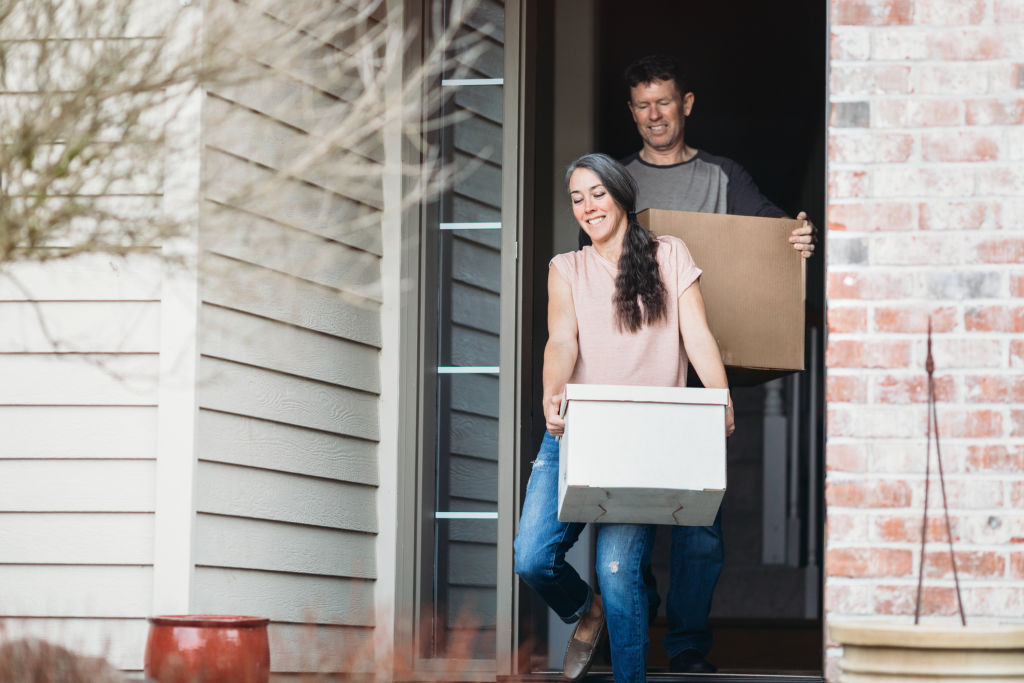 Boxes with lids are great for those essentials you’ll need on the first night at your new home including toiletries, breakfast for the next day and tea and coffee. Photo: iStock
Boxes with lids are great for those essentials you’ll need on the first night at your new home including toiletries, breakfast for the next day and tea and coffee. Photo: iStock
11. Avoid an electrical assemblage nightmare
Place electrics in their own separate box. Take a picture before disassembling these items to see how the now-jumbled cords should be plugged in when you arrive at your new abode. Clear, resealable sandwich bags are great for screws and small parts that will be needed later.
12. Pack ‘the next day’ essentials
Invest in some large clear boxes with lids. These are great for those essentials you’ll need on the first night at your new home including toiletries, breakfast for the next day and tea and coffee. It’s a good idea to include two changes of clothing for you and the family, one work outfit and the school uniforms (including shoes), bedding for your first night, some towels and details of a good takeaway joint – cooking is going to be the last thing on your mind.
13. Make a place for your keys
And be vigilant about putting them back there during the shift. My set ended up in my son’s school bag.
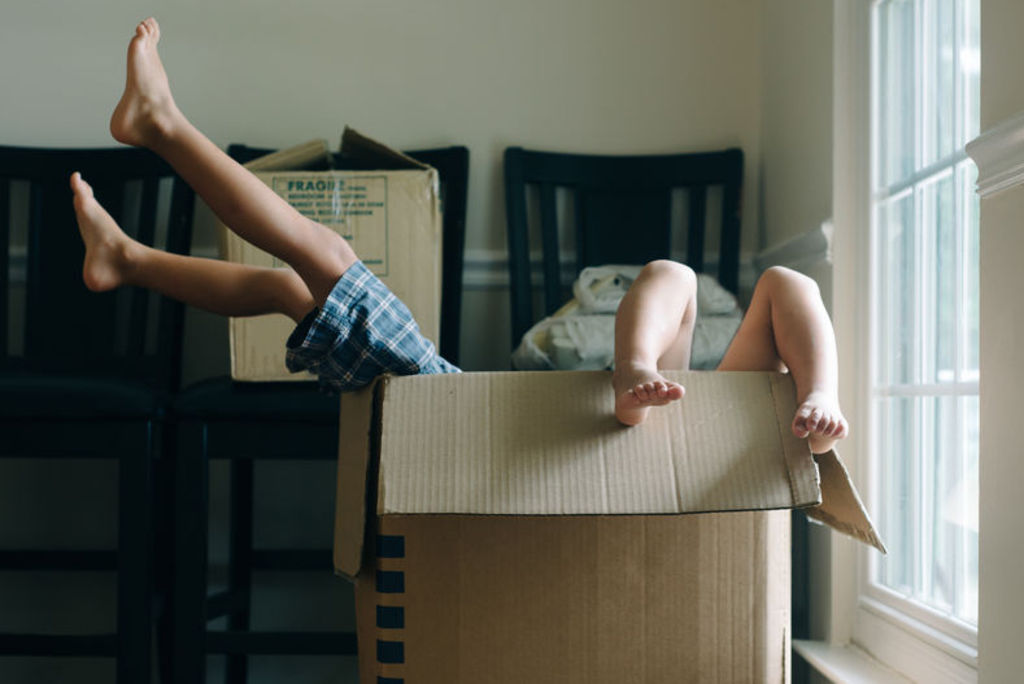 If you can, hire a babysitter. Photo: Stocksy
If you can, hire a babysitter. Photo: Stocksy
14. Hire a babysitter
If that’s not an option, ask friends and family to mind the kids on the day of the move. We are forever grateful to our friends who took our young children for this stressful day.
15. Leave cleaning equipment and supplies somewhere handy
You’ll need them on shifting day and at your new house – we now have two of everything.
Comments (0)
14 August 2019
By portermathewsblog
via domain.com.au
It’s tax time and that means many Australians are finding a bit of extra cash in their bank accounts. Whether you’re planning some DIY projects or using it to inject some style into your home, here are some tips for getting more bang for your buck.
While it’s no secret that investing in good quality homewares is worth it in the long run, what are some cost-effective ways to make a major style update in the home?
Lead interior designer at Porter Davis Homes Victoria Patrizia Romeo says investing in a mature indoor plant is a great way to instantly change the look of a space.
“Investing in a taller, more mature plant can be a great way to add a focal point within the space,” she says.
“Different areas of the home will provide different conditions for your plants, so make sure you research the needs of the plant you want to buy. This will ensure that your investment will, literally, grow over time.”
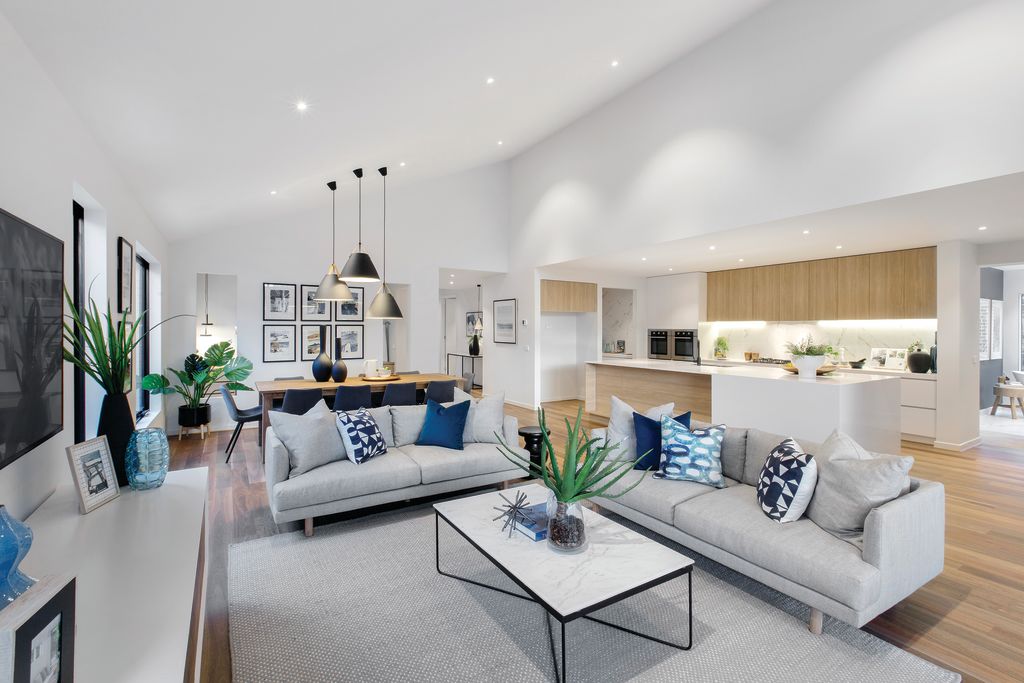 If you are looking at making subtle changes to your home, consider adding house plants. Photo: Porter Davis
If you are looking at making subtle changes to your home, consider adding house plants. Photo: Porter Davis
The bedroom is your sanctuary, so investing in bedding is a no-brainer. Romeo says choosing a natural colour tone is best for making the most of your money.
“Natural fabrics such as linen, bamboo and silk are great to use, they’re durable,” she says. “Pairing these with feature cushions and chunkier statement throws is a great way to add layers within the room.”
Garden expert Bonnie Grants says now is a good time to get out in the garden and prepare for spring, and you can’t go wrong spending your tax dollars “exploring what your green thumb can do”.
“Planting now and prepping the soil, spending money on trees, grass and fertilisers is the best way to set yourself up for spring,” she says. “There’s nothing you can do to your garden that won’t be worth the money in the long run.”
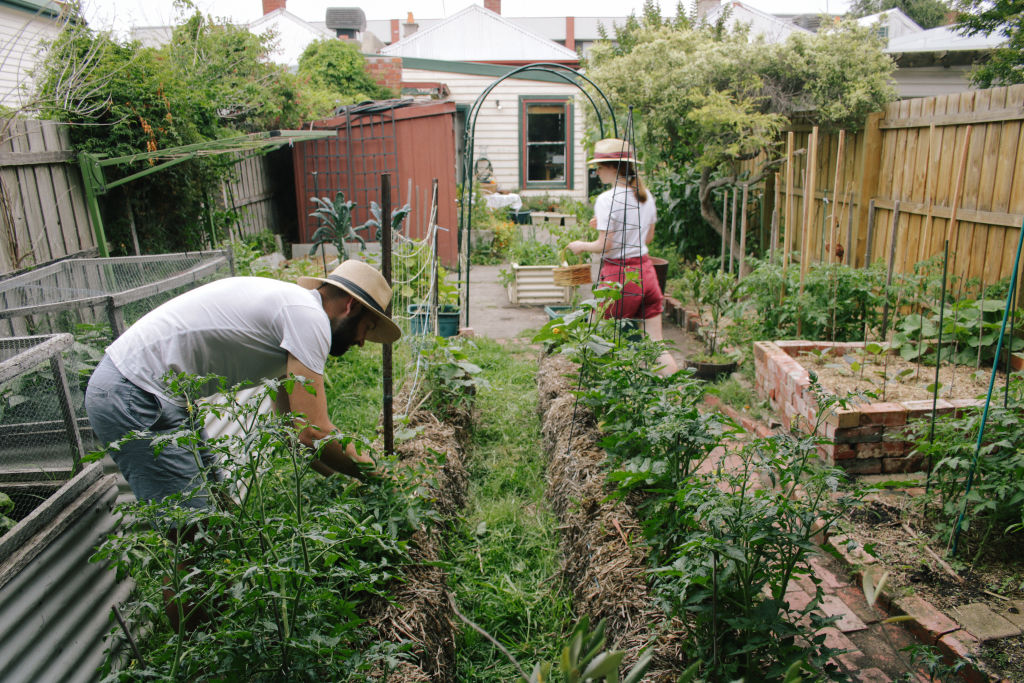 Topping up your garden shed now means you’ll be ready for spring.
Topping up your garden shed now means you’ll be ready for spring.
When it comes to what to plant, flowers with bright colours are always a winner.
“I love the Alyssum flower because it’s such a good insect attractor and it can withstand just about any climate, so you’re not risking much planting it while it’s still cold,” says Grants. “It’s also unusually small so it can be planted anywhere, even in veggie patches or in planter boxes.”
Getting the garden furniture sorted out before spring sets in minimises the risk of any surprise damages.
“At the very least take a look at your garden furniture see if anything needs replacing, and make the most of the end-of-financial-year sales,” says Grants. “It’s also the perfect time to spend a little extra on gardening tools. Plus, pruning is best done at the end of winter, so you’ll need some good gear.”
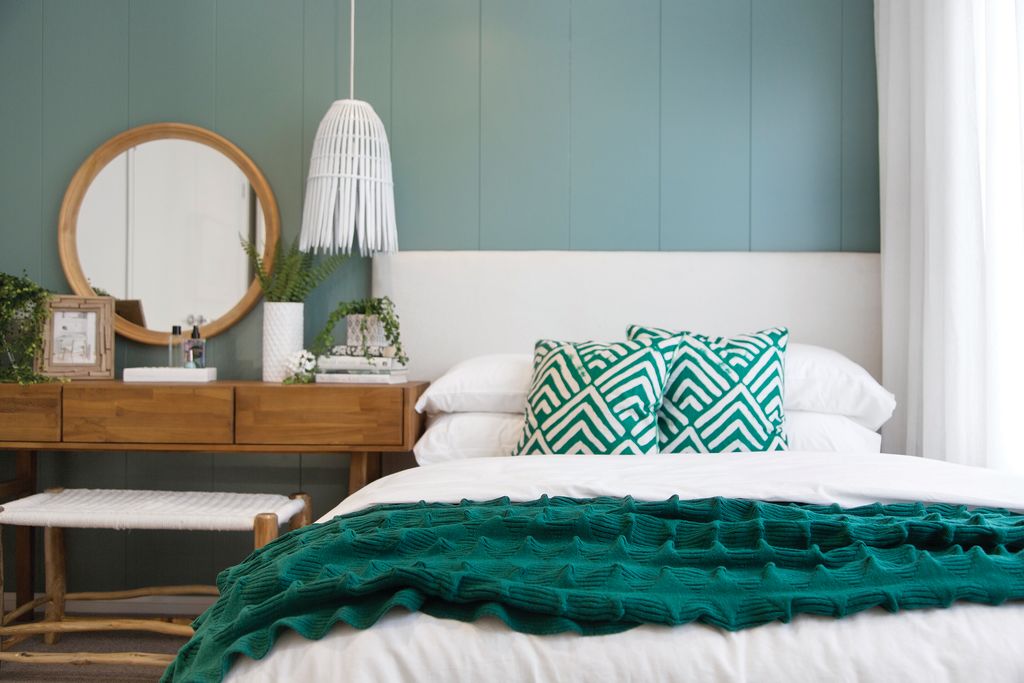 Utilise different colours and textures to create an inviting and peaceful atmosphere. Photo: Porter Davis
Utilise different colours and textures to create an inviting and peaceful atmosphere. Photo: Porter Davis
The old saying you get what you pay for applies to homewares too, so putting your tax return towards something with a higher price point than you normally would is something to consider. Romeo says a sofa is a big ticket item that shouldn’t be passed up for a cheaper alternative, but it’s also important to think about your lifestyle when choosing one.
“Leather is more durable but can be costly and a white sofa may look great, but it’s unforgiving when it comes to children’s messy fingers,” she says. “Stick to neutral tones and a sofa which suits your style and can adapt to changing trends.”
Comments (0)
09 July 2019
By portermathewsblog
via domain.com.au
 The homes of the future will be reliant on voice-activated technology, making your ordinary remote control obsolete. Photo: Stocksy
The homes of the future will be reliant on voice-activated technology, making your ordinary remote control obsolete. Photo: Stocksy
What will our homes look like in the future? It’s tempting to daydream about robots and self-driving cars, but the next 10 to 20 years will probably look much the same as they do now, with a few more conveniences.
Walkley Award-winning author and broadcaster Antony Funnell, who hosts the ABC podcast Future Tense, predicts that the electricity grid as we know it will shrink, while our reliance on renewable energies will undoubtedly grow. Meanwhile, many of the things we currently consider niche will soon be used by every household.
Here are the biggest predictions from Funnell for home life in 2030 and beyond.
Say goodbye to light switches
The homes of the future will be reliant on voice-activated technology, making your ordinary remote control obsolete. Your entertainment systems, airconditioning and light switches will be able to turn themselves on and off at the sound of your voice. Love them or hate them but Siri and her pal Alexa will only grow in use.
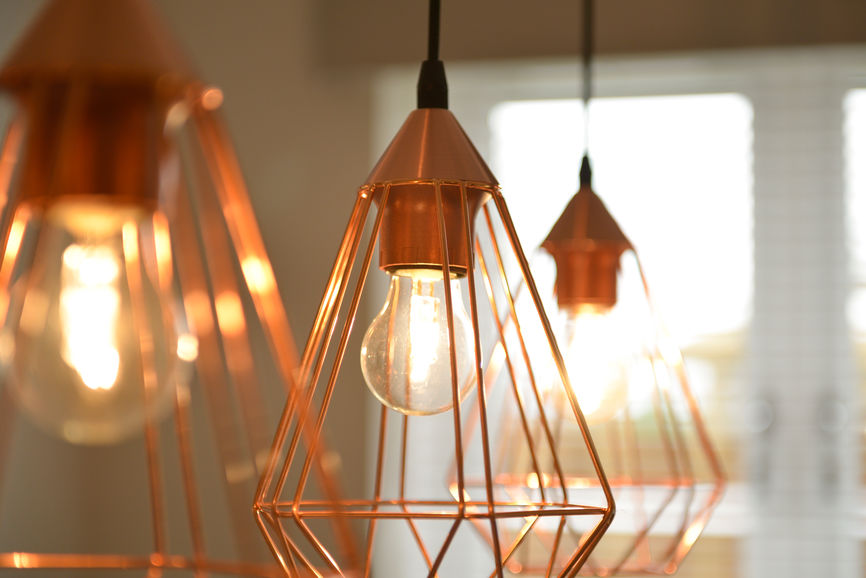 Love them or hate them but Siri and her pal Alexa will only grow in use. Photo: Stocksy
Love them or hate them but Siri and her pal Alexa will only grow in use. Photo: Stocksy
And … your television
“The days of everyone in the family sitting around a television screen are disappearing,” says Funnell. But that’s not because we’re giving up on our entertainment. Tablets, iPhones and laptops will be how we view our shows, putting an end to communal watching – at least within the home.
“The idea that they’ll be a big television screen in the middle of the room with the family focused on it, those days are over,” says Funnell.
Which will have a knock-on effect on design. “With the central TV disappearing, you’re going to see a trend toward more ‘breakout’ spaces for people, places, or nooks, where, if you want to watch the last episode of Game of Thrones, you can go away with your laptop in a room that isn’t necessarily your bedroom, but it’s not the lounge room either.”
Say hello to smart toilets
Funnell believes that toilets in the next 20 years will do more than function as a place to look at your phone. Toilets of the future will be able to weigh you, measure your vitals, such as blood sugar and blood pressure and provide feedback on what you’ve been eating. Yes, that’s right – future toilets will be able to examine your waste.
 With the central TV disappearing, you’re going to see a trend toward more ‘breakout’ spaces for people. Photo: Stocksy
With the central TV disappearing, you’re going to see a trend toward more ‘breakout’ spaces for people. Photo: Stocksy
Layout
We’re already experiencing it now, but the next 10 years will see a big move toward open-plan design. No more separate rooms, instead you can expect your cooking area to flow out into your eating area and on into your backyard. And, with more technology allowing people to work from home, that backyard is going to become your new office.
“The need for a study or home office came out of a need for fixed technology – fixed phone, fixed fax, fixed computer. But with the mobility of phones and tablets, the need for a home office is gone,” says Funnell, who adds that people will now sit in their backyards or living rooms to do work.
Bigger houses
The idea that were all going to be living in tiny flat-pack houses is incorrect, says Funnell. “Researchers have found that there aren’t that many, despite the hype, and that people use them as a stepping stone to get into the housing market. They’re not really motivated by environmental issues either.”
Instead, Funnell predicts that the backlash to high-density apartment living in the inner city will lead to an exodus.
“We’re used to the narrative that the way our urban cities work is that everyone wants to live in the city centres. But it wasn’t that way after World War II,” says Funnell.
“After World War II, everyone was moving out and we had the growth of all suburbs. It’s not unreasonable to think that in the next 10 or 20 years we will have a premium put on suburbs again – liveable suburbs where people feel they can spread out a bit, where there’s bushland.”
 The next 10 to 20 years will probably look much the same as they do now, with a few more conveniences. Photo: iStock
The next 10 to 20 years will probably look much the same as they do now, with a few more conveniences. Photo: iStock
Part of this backlash will be people who are sick of cramped spaces and looking in on their neighbours, and part of it will be about more people working from home.
But, cautions Funnell, it will only really be an option for those who have the money to do so, as the current housing market will lock ordinary people out of the trend.
”The move out of the inner city will only be for those who can afford to make the change. And that will just exacerbate inequality. For those at the bottom of the socio-economic scale, the future will be densely packed inner-city unit towers, because they have no choice.”
The one silver lining is that these big houses will likely be built with sustainability in mind. Funnell predicts that plastics, in particular, will be re-purposed into building materials.
But the idea that we will have fully functioning, environmentally friendly homes and self-driving cars in the next decade is a tad ambitious.
“Much of what we have in our houses now has been around since the last century, just with added modifications. Human nature doesn’t change all that much.”
Comments (0)
10 August 2018
By portermathewsblog
via popsugar.com.au
 Image Source: Studio McGee
Image Source: Studio McGee
Wouldn’t it be so nice to know what an interior designer actually notices in your home? Having this information would make it that much easier when you clean or decorate new spaces, or even when you decide what to renovate and what to leave as is. It can be somewhat difficult to take a critical eye to your own space that you see consistently day after day, but knowing where to place your focus and creative energy would certainly help to take out some of that guesswork, so we decided to reach out to design professional Shelly Gerritsma from Canter Lane Interiors instead. Read on to learn the five design elements she always notices first and wants you to focus on first as well.
Flooring
 Image Source: A Beautiful Mess
Image Source: A Beautiful Mess
As soon as she steps into your home, Shelly notices what’s beneath her feet. “Flooring is a major item. If carpet is dated/worn/sagging/etc, it really devalues the home,” Shelly says. So, instead of using that area rug that has probably seen better days, opt for a brand new design in a fun print, or if you want to really get creative, try adding hardwoods in a funky colour. Shelly will notice!
Wall Colour & Finish
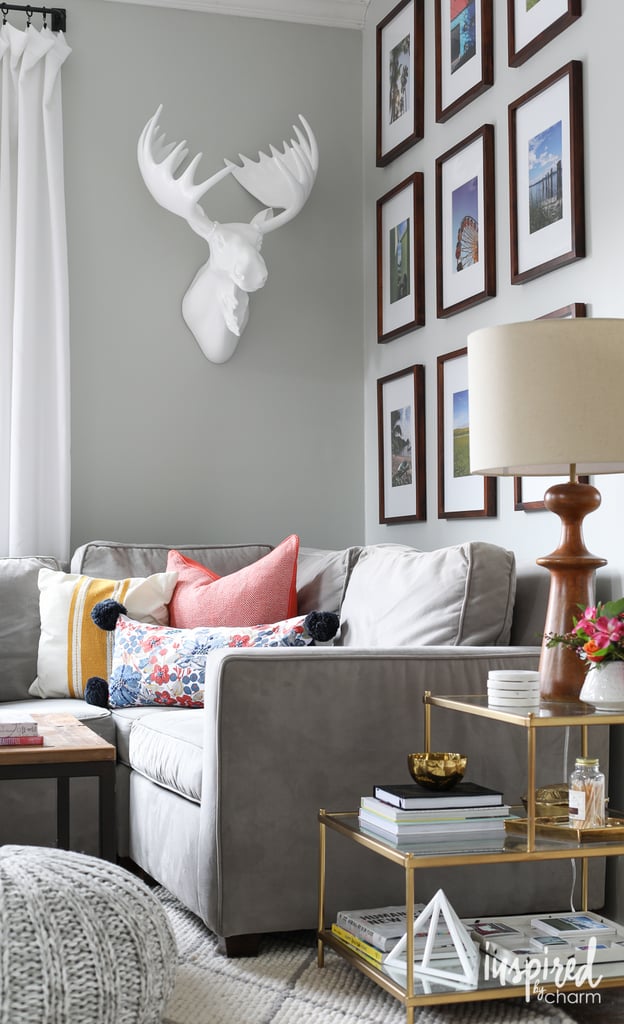
Image Source: Inspired by Charm
Once she’s assessed the flooring, Shelly is onto your wall colour and finishes. She advises that “using the proper paint finish for spaces is huge. Do not use a semi-gloss or a gloss paint finish on main living walls as it cheapens the space and looks too harsh. Stick with a flat or matte finish.” She also reminds us that nothing draws negative attention quicker than sloppy paint lines, so always ensure that those appear neat and finished.
Ceilings
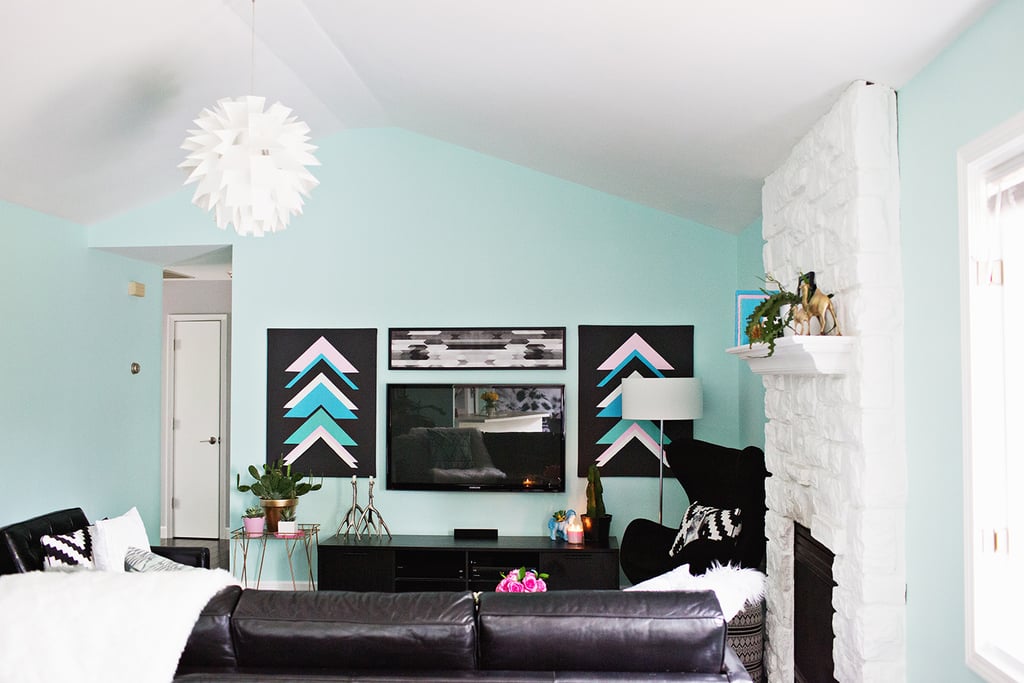 Image Source: A Beautiful Mess
Image Source: A Beautiful Mess
Another foundational element that will draw major attention from Shelly is your ceiling. Whether you want to modernise the appearance of your ceiling or you just need to open up the space a bit, this is one area that you won’t regret putting some time into. Shelly confirms that “smoothing out popcorn ceilings is a great way to add home value and to make spaces feel larger due to the shadows cast by this dated finish.”
Scale-Appropriate Furniture
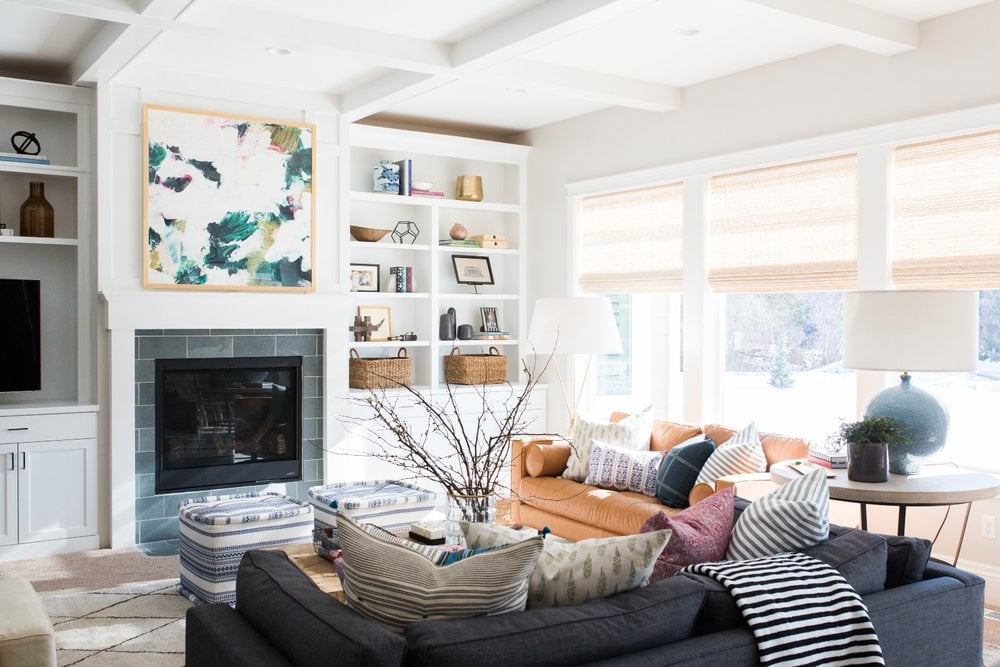 Image Source: Studio McGee
Image Source: Studio McGee
Properly scaled furnishings are key when it comes to creating a harmonious flow that’s sure to get noticed in your home. Shelly says, “Make sure that your furniture is not overwhelmingly large or so small that it looks out of balance in the space.” A huge sectional that is crammed into a space or a dainty nightstand displayed in an oversize master bedroom will do nothing but draw negative attention.
Clutter!
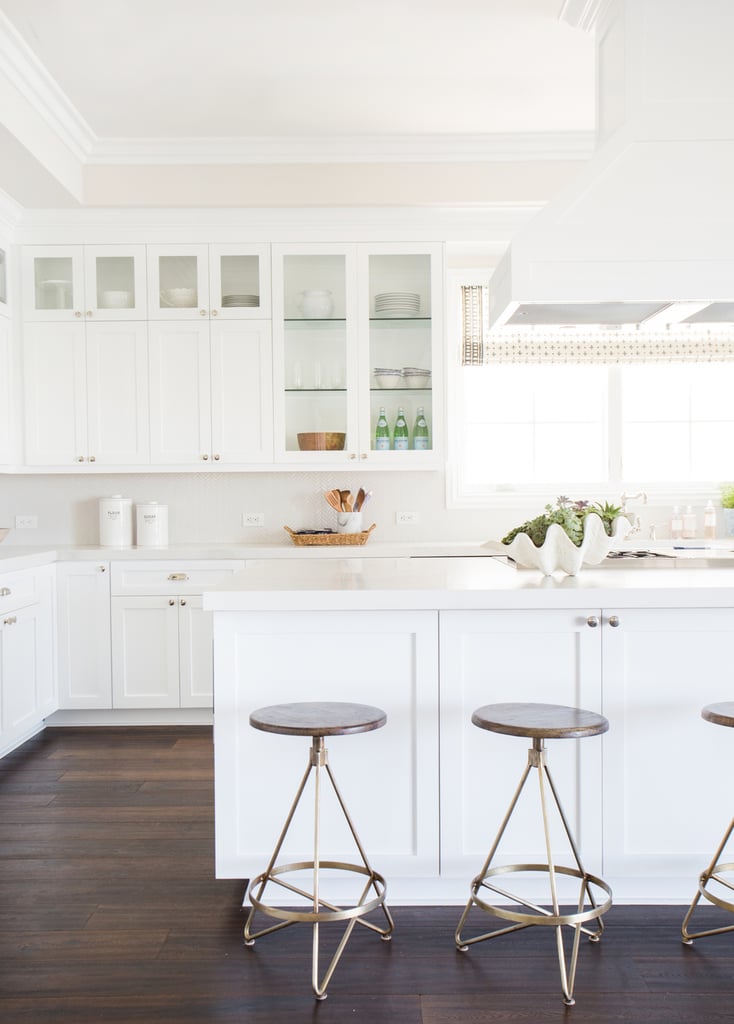 Image Source: Studio McGee
Image Source: Studio McGee
And lastly, we finish up with none other than that attention-grabbing eyesore: clutter. Yes, clutter! Shelly promises, “Keeping spaces clean and clutter to a minimum is a huge plus. Our spaces truly affect our well being, and spaces that are messy and dirty can have major psychological and physical impact.” Plus, not only will your guests appreciate your clutter-free home but you too will benefit from your Zen space.
Comments (0)
03 August 2018
By portermathewsblog
via houzz.com.au
In this practical series, we ask experts to answer your burning home and design questions. Here, Luke Menzel, chief executive officer at the Energy Efficiency Council, shares some practical tips for keeping a lid on your winter heating consumption and costs.
 Stop heat escaping
Stop heat escaping
For most homes in colder parts of Australia, heating is by far the biggest slice of the energy bill pie. Insufficient insulation and draughty homes mean that heaters have to work much harder to keep you warm, which adds to power costs.
Draught-proofing your home to prevent heat escaping is one of the simplest and most cost-effective ways to save energy, allowing you to stay warm and toasty without cranking up the thermostat.

Turn the thermostat down
Turning the thermostat too high can be a huge drain on energy and your finances, with each degree adding around 10 per cent to your heating bill. For maximum efficiency, aim to set it between 18 and 20°C. If this feels too chilly (most of us prefer a more comfortable 25 or 26°C in winter), try moving away from uncovered windows, sealing draughts and popping on a jumper.

Rug up
Having too many cold surfaces in your home can add to the chill factor too – in fact, it can have just as much of an effect as air temperature.
To make your home feel warmer, consider installing secondary glazing and adding heavy curtains to windows, laying rugs on cold, hard floors, and moving your favourite armchair so it’s not right beside a cold window.
Open curtains during the day to allow the winter sun to warm the surfaces in your home. Draw curtains at night to keep the heat in.

Only heat the rooms you’re using
Rather than heating your entire home, zone your heating so it only warms up those rooms you spend time in. Do this by closing doors to keep the heat where you need it. If you’re installing a new heating system, consider a ducted system that can be zoned for individual rooms.
Tip: Check ducting before the start of winter to check that it’s leak-free, well-insulated and in proper working condition. This can sometimes be done with thermal imaging cameras, to save crawling around in dark spaces.
 Reconsider halogens
Reconsider halogens
Halogen downlights can be a huge energy waster in winter. Aside from their high energy consumption, these lights need to be kept far away from insulation as a fire-safety precaution. This means there is an uninsulated patch of ceiling surrounding halogen downlights that provides an easy escape route for heat.
The heat that rises from each downlight can also create a chimney effect and suck warm air out of your house, which leads to chilly draughts.
 Replace old appliances
Replace old appliances
That old, second fridge in the garage or dated reverse-cycle air conditioner in the living room could be costing you more than you realise. Consider the numbers; a new, energy-efficient fridge can cost half as much to run as one that’s 15 to 20 years old – this equates to a saving of about $150 per year. Meanwhile, most reverse-cycle heating/cooling systems are between 30 and 40 per cent more efficient than those of 15 years ago.
Splashing out on new energy-efficient appliances can cut your energy costs considerably.
 Be star savvy
Be star savvy
Most major appliances, such as fridges and reverse-cycle heating/cooling systems, come labelled with an energy-star rating, which tells you how efficient they are and how much energy they’ll consume. It ranges from one to six stars (although in recent years, four additional high-performance stars have been added to many products). The more stars, the more efficient the product. Appliances with more stars may cost a little more, but you’ll save the money back in running costs.
Be aware that if you have an older appliance at home with a three-star label, it might only rate as two stars by today’s standards – and may not even be allowed to be sold under current minimum standard rules.
The number below the stars on the label is a calculation of how much electricity the appliance will typically consume in a year. Multiply this number by your electricity tariff to get annual running costs.
Tip: Tariffs can differ significantly at different times of day, so choosing when to use your appliance can help save you money. You might find it more cost efficient to run your washer, dryer or dishwasher at night or early in the morning.
 Reduce pump time
Reduce pump time
If you have a swimming pool, halving the pump-timer duration in winter can result in substantial savings. However, do check with your local pool or spa specialist to ensure you maximise energy efficiency while still meeting all the health requirements required with a pool.

Tell us
What’s your winter energy-saving tip? Tell us in the Comments section below. And don’t forget to like this story, share it and save the photos. Join the conversation.
Comments (0)
27 July 2018
By portermathewsblog
via houzz.com.au
Furniture that does more than one job is a godsend in a small home – here’s what you need to know before you buy.
In this practical series, we ask experts to answer your burning home and design questions. Here, Christine Gough, interior design leader at Ikea Australia, shares her top tips for selecting multi-functional furniture for a compact home.
If you’re struggling with clutter, a lack of space or a shortage of storage in your home, multi-functional furniture can really help. So what makes for a multi-functional piece? It is flexible, performs more than one function, and it can be moved around or customised to suit your needs. It often also includes storage, giving you a useful home for clutter so you can create a clear and inviting home.
Here are a few of the most useful designs to consider.

Image: Delaktig range at Ikea
Modular sofas
Modular sofas allow you to personalise your seating so that it fits your space – and your needs – perfectly. Choose from a ready-made combination of sofa pieces, or create a new combination to suit your home.
Modular sofas are designed with many functions and possibilities in mind. Many contain hidden storage, while others can be converted into a sofa bed to house an overnight guest. You’ll also find styles with removable covers so you can update the look of your sofa with ease.
‘Open-source’ furniture takes the idea of personalisation one step further. Ikea’s new modular Delaktig sofa (designed in conjunction with British designer Tom Dixon) has an aluminium frame and the set-up can be endlessly configured to suit your changing needs – add a side table, a lamp or two, move an armrest or change the cover, for example.

Storage or nest tables
If space is tight, pieces that do double duty, such as a coffee table with shelves or a storage basket, are a boon. They provide the perfect spot to store cushions, magazines and kids’ toys. Choosing a design on castors means you can also move it to different spots in a flash.
A nest of coffee tables is also a great option for a small space. It offers endless possibilities – pull the trio apart and use as separate side tables when you have friends over for drinks, or place them side-by-side to create one long coffee table for takeaway pizza night.
Furniture with concealed storage
Ottomans are an incredibly useful piece of furniture for any living room – they can act as seating, footstools or even a makeshift table to pop a book or magazine on. Select one with hidden storage inside, and it will provide you with a handy extra spot to store blankets, throws and the kids’ play things.

What are the most useful features to look for in a multi-functional piece?
- Customisable: You should be able to personalise it to suit your style and living needs.
- Neutral colours: Shades of grey, taupe and stone will co-ordinate with most colour palettes, and can easily be updated seasonally with the addition of pattered and coloured cushions and throws.
- Flexibility: Look for features such as removable covers and castors that make it easy to move pieces around or switch up the look of your space.

Zone smart
It’s not just furniture that’s gone multi-functional, it’s rooms too. With many of us moving to smaller homes and open-plan living increasingly the norm, the number of activities that happen in each room has increased. Once upon a time, our living rooms were used for socialising or watching television, but today you might eat dinner there, play games, listen to music, fold laundry and even exercise.
To get the best from a multi-functional room, position furniture to create zones for different activities, such as dining, socialising, work and exercise. Be led by the space and your lifestyle needs, and not by convention. If it works better in your space to have a pair of modular sofas positioned back-to-back or side-by-side rather than a traditional sofa set-up, go for it.
When positioning furniture, factor in foot traffic too. There should be enough room to move through the room comfortably.
Image: Ikea
Comments (0)
20 July 2018
By portermathewsblog
via houzz.com.au
Passionate about technology? A home-automation system is likely to be on your wish list – here’s what you need to know
In this practical series, we ask experts to answer your burning home and design questions. A premium home-automation system – also known as a smart-home system – allows you to control multiple functions in the home, such as lighting, heating and cooling, audio, security, door locks and even kitchen appliances – from a single device, be it a touch-screen remote control or an app on your phone or tablet, from wherever you are in the world.
Tempted? Here, Trevor Rooney, director of residential markets at Crestron, reveals everything you need to know about setting up a home-automation system in your own abode.

Home automation is all about convenience. Having the ability to control core elements in your home remotely, such as lighting, heating, entertainment and front-door access, can save time and make life run more smoothly.

Image: Crestron
What sort of things can a home-automation system do?
- Give you remote access to door locks so you can control who has access to your home when you’re not there.
- Switch lights on and off remotely or connect them to a timer or sensors, so they go on automatically (also great for security when you’re not home).
- Control heating or cooling so you can come home to a warm interior in winter or a cool one in summer.
- Give you remote access to alarms and surveillance systems; you will be notified if anyone approaches your home and can see who is at your front door. You can also switch surveillance on and off remotely.
- Change the television channel or switch the set on or off via voice command.
- Set your coffee machine to turn on automatically in the morning (it will even brew you a cup before you get out of bed).
- Automate your pool and pond cleaning, with the ability to adjust settings from your smart device while you’re not at home.

For even greater convenience, you can pre-determine the settings on your automated system for lighting, heating and entertainment to suit different situations. For example, you could set the system to control various elements simultaneously, so that when you go to bed it turns off all the inside lights, switches on the security camera at the front door, adjusts the kids’ night lights, and switches off the heater – all with one swipe of your smart-screen remote or an app on your phone.

Can automation cut my energy bills?
Absolutely. Here’s how:
- Accidentally left your lights on when you left the house? With home automation, you can switch lights off from wherever you are.
- Connecting blinds to a sensor-controlled system means they’ll close automatically when the temperature reaches a certain point, keeping your home cooler and reducing air-conditioning costs. You can also keep your home naturally cooler by setting up an automated shading system for overhead or exterior window shades.
- No more overheating your home unnecessarily; by installing a smart thermostat, your heating will switch off automatically when the temperature reaches a certain level.

How is a home-automation system different to a smart-home assistant?
Devices such as Google Home and Amazon Echo are great for convenience. They can perform simple tasks by using voice recognition, such as checking the weather, reading out the day’s headlines or performing Google searches.
A premium home-automation system is far more sophisticated. It allows you to automate several different devices through one simple-to-use interface or an app on your phone. So, instead of having five different remote controls to manage your various devices, you just have the one platform, which can be controlled by voice or touch.
 Image: Crestron
Image: Crestron
How does voice control work?
Systems such as those at Crestron can be connected to Amazon Echo’s Alexa Voice Service to enable voice control. This allows you to give voice commands, such as ‘Alexa, turn off the kitchen lights’ or ‘Alexa, raise the temperature in the family room by five degrees.’
You can also control multiple systems simultaneously through a number of preset scenes. For example, in the morning you could say ‘Alexa, tell Crestron to activate Morning Theme,’ and the blinds will slowly open, the lights will switch on and a warm shower will start running in the bathroom. Or, if you want to set the mood for an intimate dinner party, simply say, ‘Alexa, tell Crestron to activate Intimate Dinner.’ The dining room lights will dim, the window coverings will adjust and soothing music will play from your speakers.

What should I expect to pay?
This depends on the level of automation you want. Crestron’s new PYNG 2.0 platform (available later this year), which controls audio/visual functions, such as the television, Foxtel, Apple TV and Sonos, starts from around $3,500. This would include the processor and a touch-screen remote control. Incorporating lighting and shading solutions into a home-automation system would see this cost rise to around $10,000, depending on the size of the space.
A fully connected smart-home system starts from around $25,000, depending on the size of the property.

Can I retrofit an automated system?
It’s best incorporated during the building phase. However, it’s certainly possible to install after the build.

Comments (0)
12 July 2018
By portermathewsblog
via domain.com.au
With Australia’s major supermarkets banning the plastic bag it’s a good time to get on board #PlasticFreeJuly.

The initiative, whereby people pledge to reduce plastic from their lives for a month, is a great opportunity to learn about plastic-free eco alternatives beyond the tote bag.
Founder of the Plastic Free July Foundation, Rebecca Prince-Ruiz, says while plastic is an extremely useful material the fact it’s designed to last forever causes problems for the environment.
One of the biggest impacts is, of course, on wildlife. But plastic is a huge problem for humans too. Plastic bags contain a cocktail of chemicals that leach into the environment and increase up the food chain. “The UN Environment said it’s one of the greatest environmental challenges of our time,” Prince-Ruiz says.
Images of the Great Pacific Garbage Patch might suggest it’s a problem happening elsewhere. “CSIRO research found plastic in every beach in Australia,” Prince-Ruiz says. “And because we have high concentrations of wildlife, we’re the area in the world where seabirds are most at risk.”
Only 9 per cent of all plastic we’ve made on our planet is recycled, according to Prince-Ruiz. “This is a problem we can’t recycle our way out of. We need to rethink our use of this material.”
She suggests eliminating all single-use throwaway plastic such as plastic lollypop sticks, bottle caps, drink bottles and bags. “These are what we’re finding in our environment. It’s not about being perfect, or a competition. It’s about saying ‘hey, I’m going to try’.”
Frustration with sourcing plastic-free products led Sydney-based Lottie Dalziel to found an online marketplace where consumers can purchase plastic-free products all in one place. Launched in March, banish offers more than 460 products across 22 eco-friendly and cruelty-free brands, and is part of a growing movement to rein in the problem of plastic waste.
From the quirky and old-fashioned, to the funky and plain brilliant, here’s a glance at what’s out there to help you replace plastic in the home in July and beyond.
Kitchen
Beeswax wraps
Use to replace cling wrap. “It comes in funky colours and is a piece of fabric coated in beeswax,” Dalziel says. “Using the heat in your hand, it moulds. You just unwrap and rinse in cold water and use again.”
 Beeswax wraps can replace cling wrap. Photo: Beeutiful.com.au
Beeswax wraps can replace cling wrap. Photo: Beeutiful.com.au
Lunch skins
The lightweight fabric bags come with a velcro closure and replace plastic lunch and snack bags.
Reusable produce bags
“Take these shopping with you and put your fresh produce into them, Dalziel says. “Keep them in their bags and it helps separate them in your crisper.”
Knitted and fabric cleaning cloths
Washable and re-usable, these replace your Wettex or Chux.
Coconut fibre scourers
A trendy accompaniment to your au naturel wooden chopping board.
Reusable straws
Choose from bamboo or stainless steel options.
 Reusable bamboo straws. Photo: Banish.com.au
Reusable bamboo straws. Photo: Banish.com.au
Tea strainers
Combine the old-fashioned metal tea strainer with loose-leaf teas to banish plastic from your morning cuppa.
Bamboo takeaway cutlery
Chuck these in your lunchbox or buy in bulk for parties instead of the plastic variety.
Dishwashing tablets
Add a tablet to your dishwasher compartment and use as normal. Lil Bit sells a Cajeput-scented, Himalayan salt tablet.
Dust brush
Eco-Max offer a handmade and biodegradable recycled timber and coconut fibre dust brush.
 Himalayan salt dishwashing tablets. Photo: Lil’ Bit
Himalayan salt dishwashing tablets. Photo: Lil’ Bit
Bathroom & personal hygiene
Shampoo and conditioner bars
Handmade, full of yummy ingredients and sure to start a trend. Get them at Lush and Beauty and the Bees.
Deodorant paste
Scent up with this option from Good & Clean. A portion of profits goes to your conservation project of choice.
Bamboo toothbrushes
“Cut off the bristles and the bamboo is completely biodegradable,” Dalziel says.
Dental lace
Made from Mulberry silk and mint-flavoured, it comes in it’s own refillable glass and stainless steel container. Get it at Ecostainable.
Metal razors
Built to last, you probably have one in your cabinet. For something new and nifty try the Parker Safety Razor.
 100% natural deodorant paste. Photo: Good & Clean
100% natural deodorant paste. Photo: Good & Clean
Menstrual cups
Made with soft, medical-grade silicon, menstrual cups are used like tampons. Find them at Banish and other stockists.
Biodegradable cotton buds
Go Bamboo sell biodegradable bamboo cotton buds.
Tooth and gum powder
Natural ingredients mean this is also better for you. Buy it online at Banish.
Laundry
Soap nuts/soap berries
The saponin-rich shells of the Sapindus Mukorossi tree nut produce foam when mixed with water. “Add about seven nuts to your washing load in a bag,” Dalziel says. (Micro-plastics in traditional detergents end up in the world’s waterways).
Toilet
Toilet bombs
Pop one in the toilet for five minutes, scrub and flush away. Get them at Lil Bit.
Waste
Biodegradable trash bags
Hurrah. These do exist! Find them online at Biotuff and Flora & Fauna.
 Biodegradable cotton buds. Photo: Shop Naturally
Biodegradable cotton buds. Photo: Shop Naturally
Comments (0)
09 July 2018
By portermathewsblog
via reiwa.com.au
 Are you looking to jazz up your home but don’t have the available funds? Maybe you are planning to sell, or just want to give it a facelift?
Are you looking to jazz up your home but don’t have the available funds? Maybe you are planning to sell, or just want to give it a facelift?
Either way you don’t need to spend an arm or a leg, you just need a little bit of inspiration.
Here are five ways you can give your home the ultimate make-over without breaking the bank.
1. Clean out/de-clutter your home
Start by a good old clean out – this you can do for free. Living in a messy, cluttered house will have you feeling anxious and itching for a change of atmosphere, plus it won’t make a good first impression on visitors.
rid of junk you don’t need, wash the walls, doorways and clean all the dust and cob-webs! This will have an immediate effect on the oxygen circulation of the house – breathing in fresh air is the start to feeling good in your home.
2. Paint the walls
Whether you want to change the colour all together or just want to lift the look,the most effective way to rejuvenate your home is to apply a fresh coat of paint.
Light to neutral colours gives you more flexibility with furniture and décor, and creates the illusion of space. Plus, painting your home is relatively cheap, unless you want to seek a professional painter to do the job.
While you have the paint out, it is also a good idea to re-paint the doors, door frames, skirtings and ceilings in simple white, to freshen up the aesthetic of your house.
For some inspo, find out how to select the right paint colour for your home.
3. Re-decorate
It is ridiculously affordable to decorate your home these days, you just need to trigger your creative side.
Adding plants and some pottery to your home is a great way to set the mood and can be very affordable and easily maintained with a little bit of TLC. Adding a splash of greenery to your space is not only aesthetically appealing, but pot plants also help purify the air, just make sure you buy plants suitable for indoors.
Candles, incense and infusers also have dual purpose when it comes to décor. They look good, and smell good, once again adding that infused delicious aroma to your home.
When it comes to the bedroom and living rooms, pillows, throws and new linen is something that will always catch the eye. What better feeling is there than purchasing fresh new bedding? Try and coordinate this with whatever colour you paint the walls or keep the same colours but you can mix up the styles.
Remember, simple can sometimes mean more, so try keep all decorations minimal but effective.
4. Rearrange furniture
If you already love your furniture but still feel sick of it, a simple re-organise of the couches, TVs beds, tables etc can make you feel like you’re in a whole new house.
Making different uses out of the things you already have in your home will save you money. You think you might be sick of an item, but put it somewhere else and you might fall in love with it all over again.
5. Update light fittings
Lighting is the key to making any home stand out, and you would be surprised what a simple swap of the light fittings will do.
If you’re on a budget consider going for one or two designer light fittings in the main living areas, then cheaper ones for the other rooms.
While we are on the topic of lighting, you can also replace the light switch covers which won’t cost you a lot at all. Swap out those old fashioned, plain switch covers for silver, stainless steel or modern white covers.
Comments (0)
06 July 2018
By portermathewsblog
popsugar.com.au
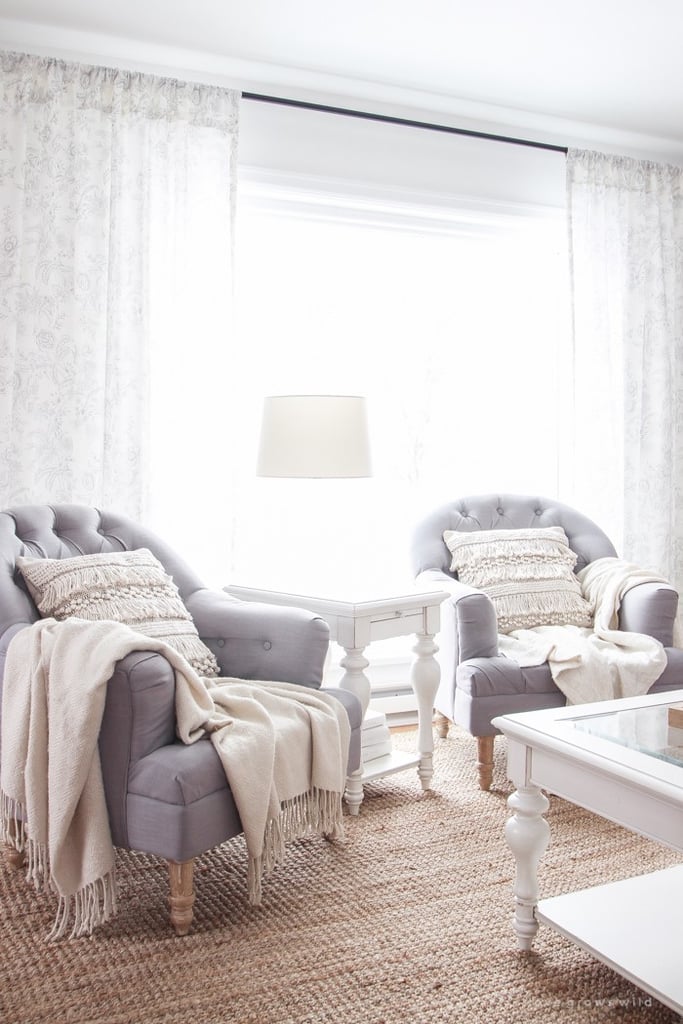
Image Source: A House in the Hills
If there are rules that you as a renter must follow, make it these 10 commandments. Because, while paying your rent on time is important, so too is making sure your place is personalised and stylish. Working within the boundaries of your landlord, it’s little things like a new light fixture that will make an impact without costing a lot of time or money. And, the best part about this entire list is that you’ll leave with your security deposit intact once it’s time to move up and on.
- Thou Shalt Add Storage
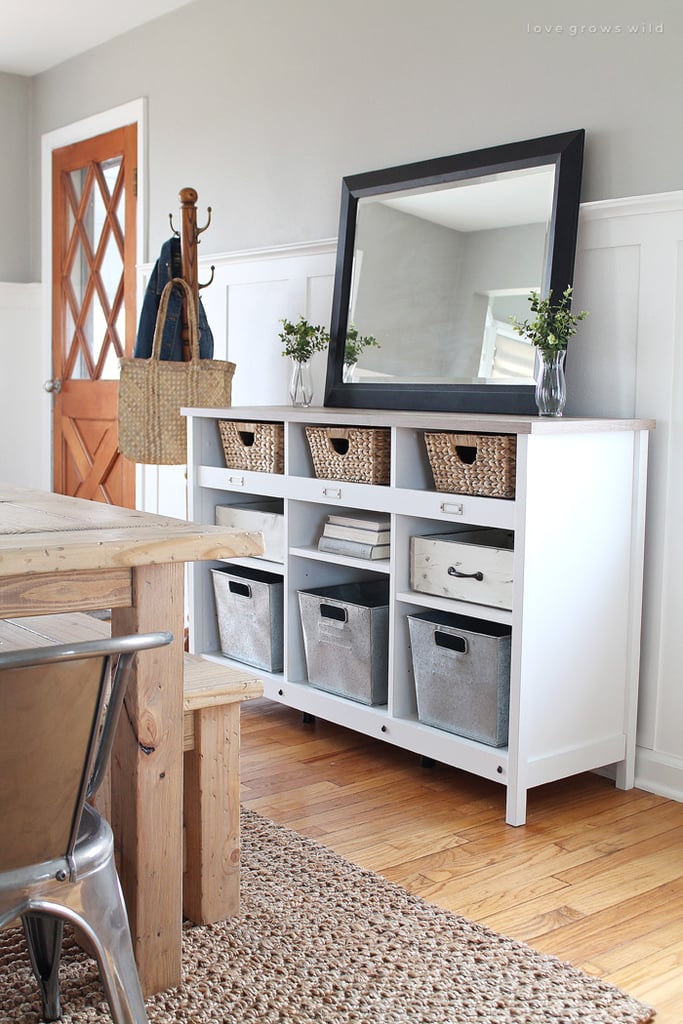
Let’s get real, custom cabinetry is not an option if you don’t own the place. Since rentals usually lack storage, add your own with affordable Ikea bookcases, simple shelves, or these organising solutions.
- Thou Shalt Change the Hardware
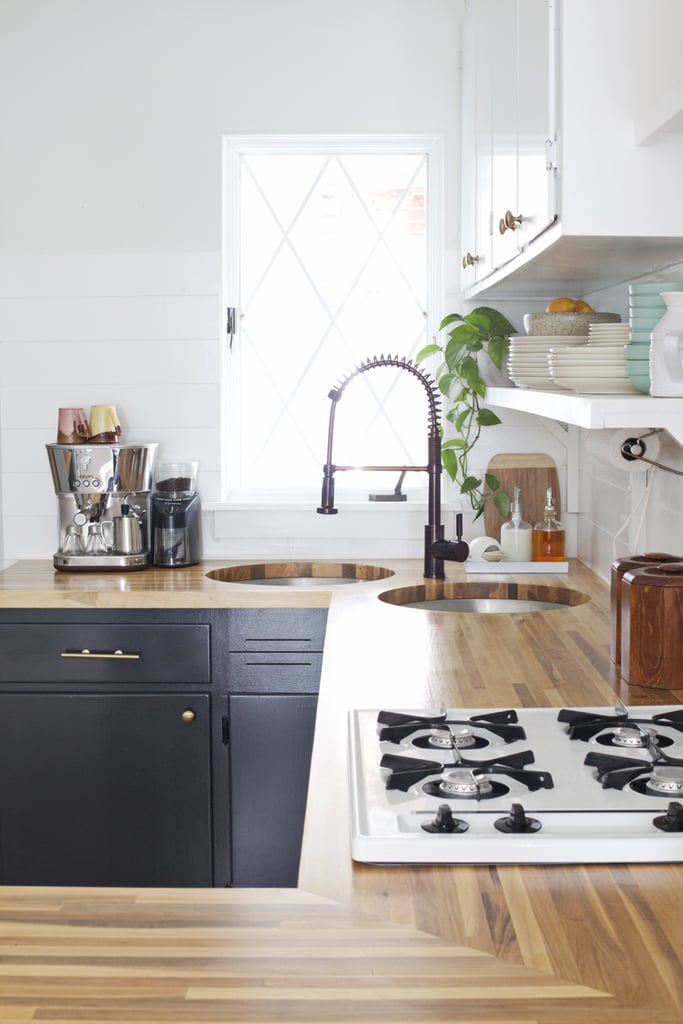
Rental hardware is basic . . . your style, not so much. Switching out cabinet pulls and bathroom hardware will make a huge difference. Just remember to keep the original pieces to swap back in before moving out.
- Thou Shalt Ditch Vertical Blinds
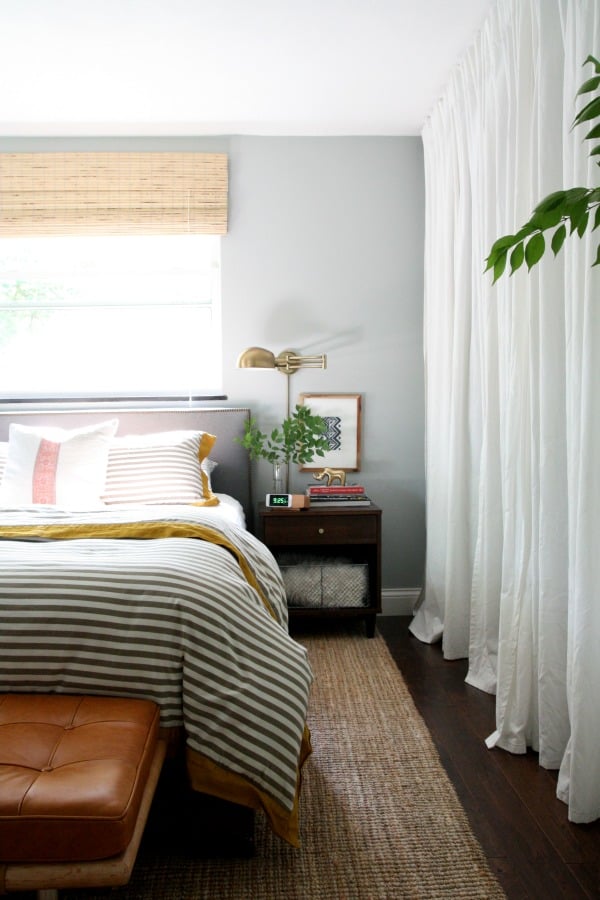
Image Source: Dana Miller for House*Tweaking
They are the ultimate decorating sin! To prevent your space from looking like a hospital room, take them down or hide them under curtains. Again, don’t toss — they’re essential if you want your security deposit back.
- Thou Shalt Line Cabinets
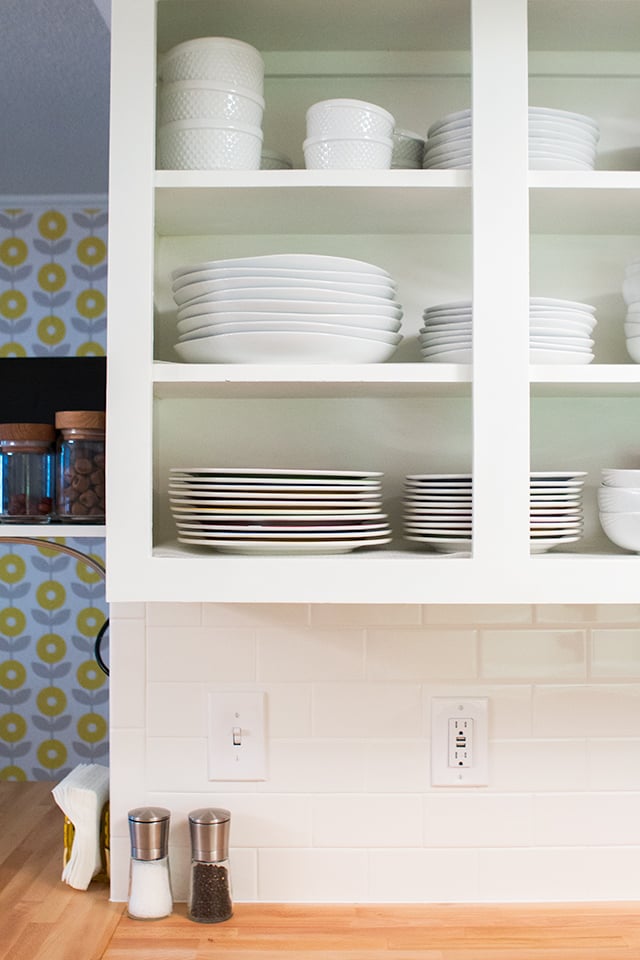
This might seem trivial and a bit annoying, but lining your cabinets is a must. Not only will it make your kitchen look clean, but also it will mask worn and grungy cabinets without having to paint. Adhesive liner works, but a softer grip liner is better because it’s easy to install; it will also prevent glassware from chipping.
- Thou Shalt Accessorise Like Crazy
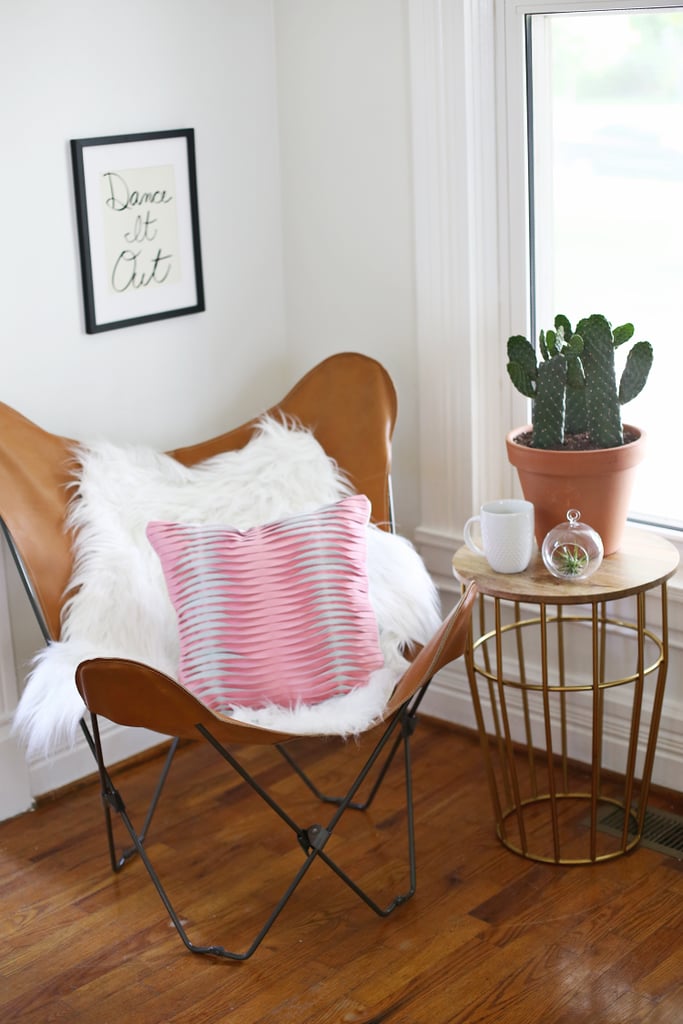
It’s true, and that’s the only way you’re going to get a truly personal space. Go to town with throws, pillows, and accents that reflect your style.
- Thou Shalt Avoid Wallpaper
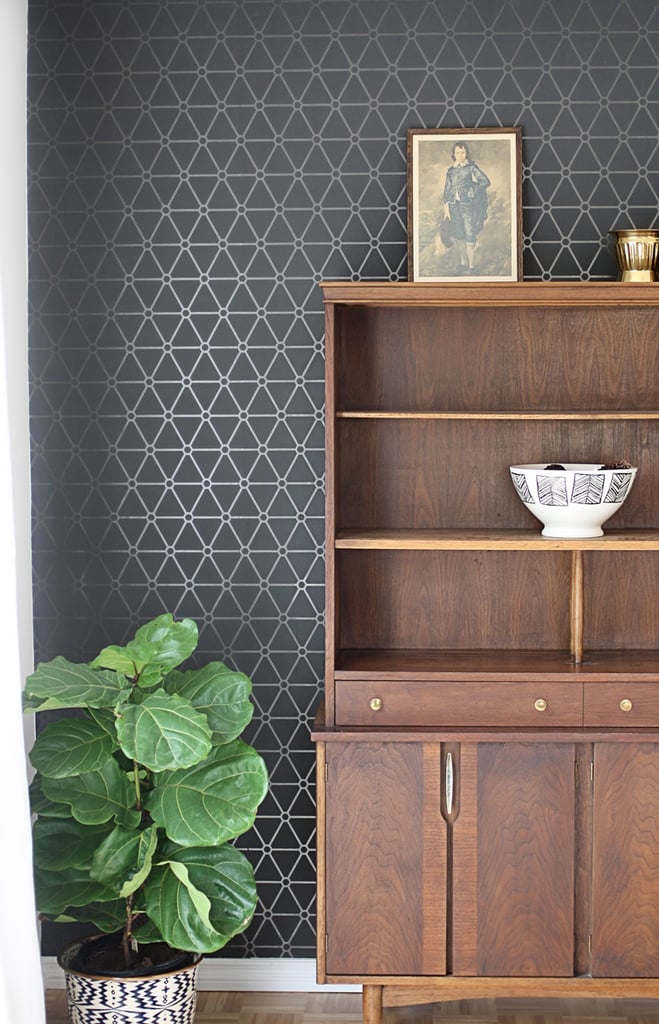
Well, in most cases. Sure it’s stylish, but in all honestly, wallpaper is really inconvenient to remove, especially if you won’t be in your place for long. If you love the patterned look, consider the removable wallpaper seen in this studio or these alternative wallpaper ideas.
- Thou Shalt Hang Art
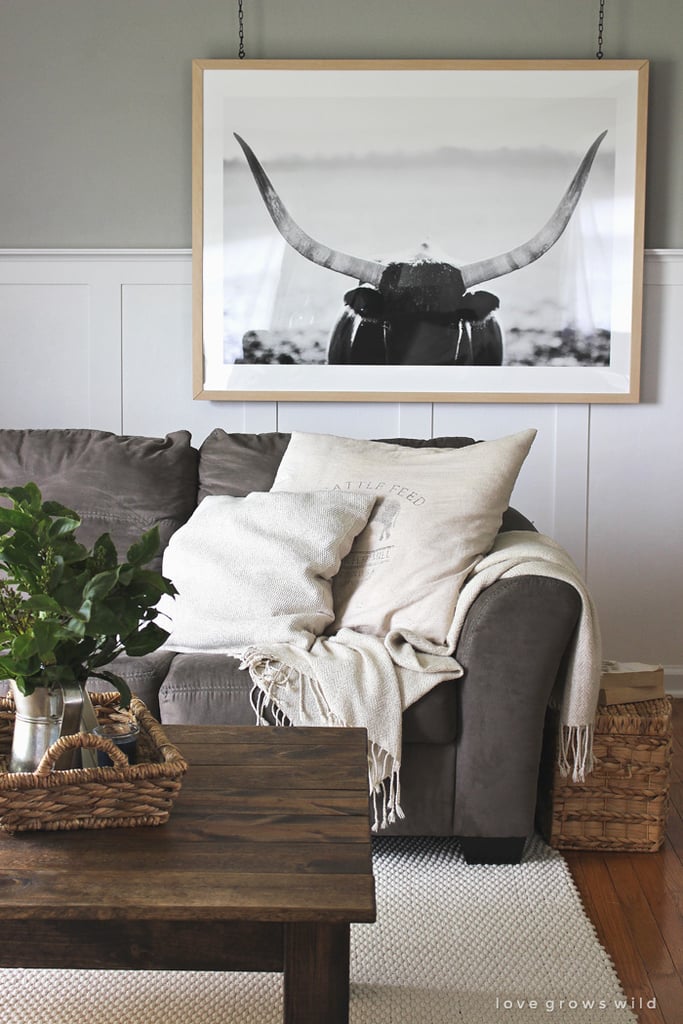
Image Source: Love Grows Wild
No excuses — get your art on the walls! Patching up a tiny hole come move-out day is nothing compared to the impact it will make on your space. No need to create a full-blown gallery wall either. Try hanging one statement piece and resting photos on a mantel or shelf, similar to this home.
- Thou Shalt Invest in Rugs
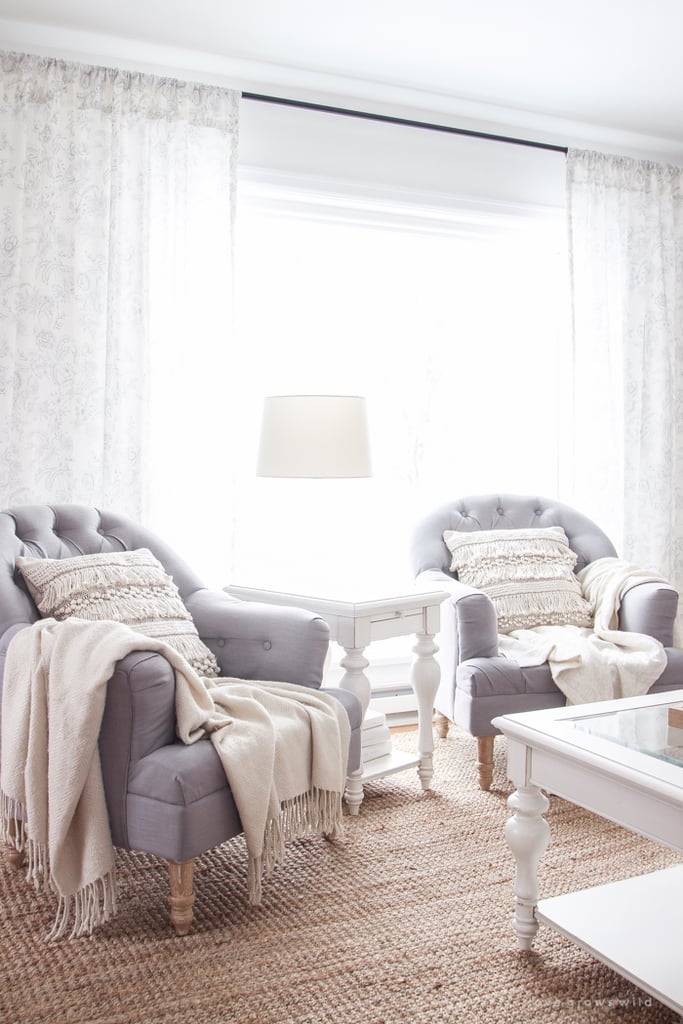
Especially if your place has carpet! Rugs are an easy way to cover up that not-so-cute carpet and can be packed up with you come your next move. Rugs are also a necessity to keep noise down, especially in older apartments with wood floors.
- Thou Shalt Emphasise Lighting
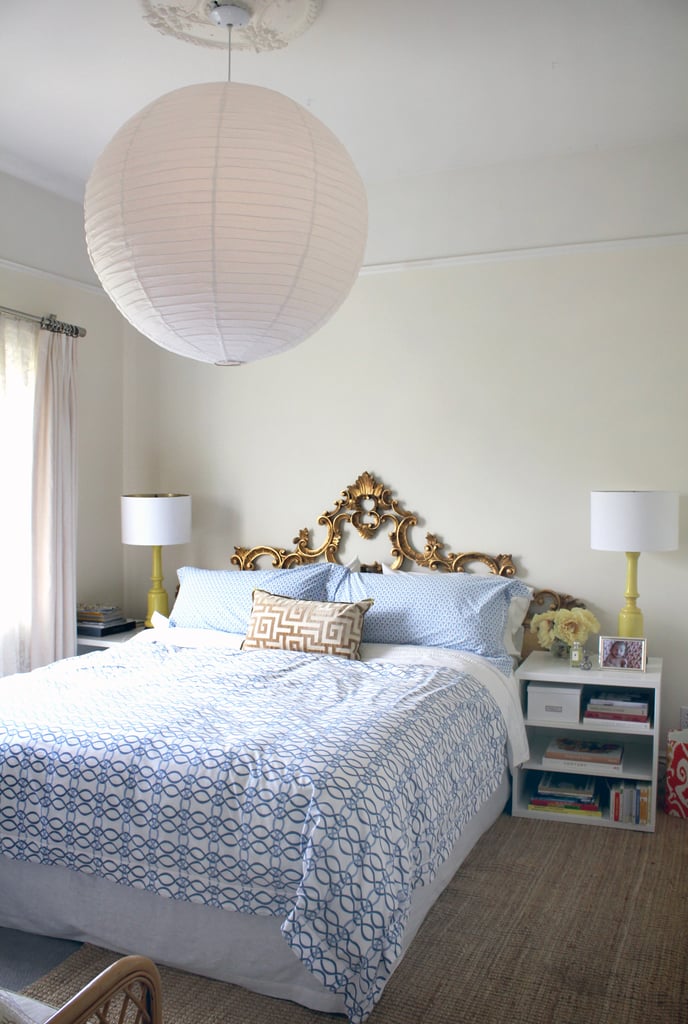
Image Source: POPSUGAR Photography
This is another trick that many renters often overlook. Take it from HGTV stars Anthony Carrino and John Colaneri who suggest you use lighting to set the tone and make an impact in a rental. Get creative with floor and table lamps that can easily be moved from place to place.
- Thou Shalt Make the Most of Plants
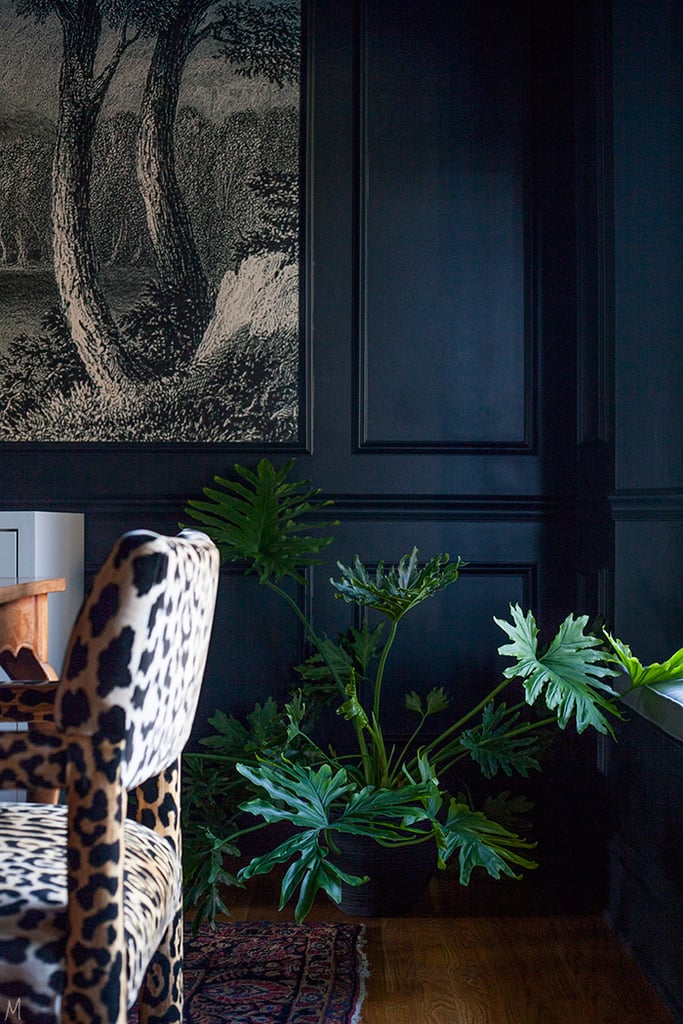
No yard? No problem. Pots are a great way to achieve the bohemian jungalow look or even have your own urban garden. The best part is you won’t have to fret about leaving any of them behind.
Comments (0)
02 July 2018
By portermathewsblog
via houzz.com.au
An interior designer reveals the essential rules for achieving a perfectly balanced interior.
Have you ever walked into a room and it just felt right, but you couldn’t put your finger on exactly why? Chances are that proportion was a key factor – whoever designed the room would have paid careful attention to getting the size and scale of the furniture and accessories just right for the space.
We talked to Rohan Smith, senior interior designer at Coco Republic Interior Design, to find out how you can create beautifully proportioned rooms in your own home.
 Why does proportion matter?
Why does proportion matter?
Because furnishing a room is more involved than simply placing a few pieces of furniture in a space – some fundamental rules of design need to be considered, one of the most important being proportion. You need to consider not only the proportional relationship between the pieces themselves, but to the space that contains them.
A room looks and feels right when the proportions are good, and there’s neither too little nor too much furniture. If furniture is too big, the flow of the room can feel awkward. If it’s too small, the space won’t feel cosy or inviting.

What are the most common mistakes people make?
Having all the furniture and furnishings in a room the same height, colour and style. The room ends up looking dull and static. This is easily rectified. A tall floor lamp, for example, can add some height to a corner, while providing a lovely ambient light source. A tall cabinet or bookcase can add visual interest as well as handy storage.

How do you assess proportion?
One of the easiest ways to assess whether a sofa, dining table or bed will suit the size of your room is to map it out with newspaper and lay it on the floor. This will give you a sense of how much floor space the piece will take up. Living with this template for a few days will give you a definite feel for how it will be to live with the piece.
A more technical method would be to use the Houzz Sketch tool or an app such as Magicplan. You simply take photos on your smartphone, which the app then translates into a plan of the space. You can then add objects, annotations and attributes to create a complete plan of your room.

What proportions do you need to consider for a living room?
Living rooms can be tricky to get right, especially in open-plan spaces.
If the room is your main television viewing space, then you’ll need to factor in technology as well as furniture. Is the TV too big for the room? Is the entertainment unit balanced with the size of the TV, and the room as a whole? A common mistake is to have a small entertainment unit with a large TV – it should be the other way around. Also, consider whether the sofa is the correct distance from the TV for viewing comfort. It should be about 2.5 times the screen width in distance away, and no more than 5 metres. The centre of the TV should be about 1 to 1.1 metres from the floor.
A large sofa and a small rug also look unbalanced.
For living rooms, the furniture arrangement should be conducive to conversation. Two sofas facing each other or a U-shaped arrangement are ideal. The coffee table should also be the right height for the sofa. You should be easily able reach the coffee table from a seated position so you can rest a cup of tea or a glass of wine.

What about a bedroom?
One of the main considerations in the bedroom is the size of the bedside table in proportion to the bed. For a king-size bed, go for a large-scale beside table of about 70-90 centimetres in width, depending on the size of your bedroom. For a queen-size bed, a bedside table of around 50-60 centimetres is ideal.
Bedside lamps should also sit proportionally with the bedside table and bedhead. Again, for a king-size bed, a larger lamp will work best.

Are there any golden rules for hanging pendant lamps?
When pendant lamps are hung too high or low, they can look completely out of place in a room. You need to consider the size and style of the pendant, the ceiling height, and the space in which they will be hung.
Despite these variables, there are still a few hard-and-fast rules that can help when hanging pendants. For kitchen benches, hang lights around 70-80 centimetres above benchtops. This height allows the pendants to provide a useful light source for working, without intruding on the line of sight from the kitchen to the adjoining living or dining room.
For your dining table, sit pendants at 75 centimetres above table height to create an intimate and cosy dining space. For entries and hallways where people will be walking beneath the pendant lights, space allowing, the ideal hanging height is 240 centimetres from floor level.

What about hanging art?
Choosing artwork that is the wrong scale for a room is a common mistake, with most people erring on the small size. Checking to see whether a gallery will allow you to bring a piece home on approval is the best way around this. If you fall in a love with a piece that is too small for your room, have it re-framed with a larger mount.
Another common mistake is to hang artwork too high on the wall. If a piece is hung too high it will have no connection to the furniture below it, and if it’s above eye level it can ruin the look of a room.
Ideally, artwork should be hung so that the centre of the piece is at average eye level or about 150 centimetres from the ground. In a dining room you might want to hang the pieces slightly lower to factor in the seated viewing height.
Also remember that having some negative space is important. Leaving some walls bare not only puts more significance on the pieces you’ve hung, but creates a calmer feel in the room.

And rugs?
Rugs are a great way to bring a furniture grouping together. They provide a border for furniture to sit on and can help you create individual dining and living zones in an open-plan room where furniture has a tendency to ‘float’. Ideally rugs should sit under the front legs of the sofa and occasional chairs – this helps visually link the pieces together.

What about the proportions for colour in a room?
When making your selection, consider the 60-30-10 rule, which is a timeless decorating principle that can help you create a balanced colour scheme. Your 60 per cent is the main colour for a room, which anchors a space and provides a backdrop for the other colours. In a living room this would be walls, sofas and rugs.
Your 30 per cent is the secondary colour, which would encompass occasional chairs, bedlinen, window furnishings and occasional furniture. It should support the main colour, while being different enough to set it apart and give the room interest.
The final 10 per cent is your accent colour. For a living room, this would include scatter cushions, decorative accessories and artwork. For a bedroom, think throw pillows and artwork.

Do the rules of proportion apply to the little details too?
Keeping an eye on the proportion of decorative accessories is another important consideration. One large bowl on a dining table might be all you need in that space to create drama. Conversely, combining small objects with other similar objects can create just as much impact. A collection of ceramic pots makes one big statement, whereas a few pots scattered about will look disconnected and out of proportion.
Lamps should not overshadow the table on which they are placed. A large lamp on a slender table, for example, would appear top heavy. Too much variety of scale can cause visual chaos in a focused area, such as a bookshelf. Instead, group items of similar type and scale together, and line up like-sized books for a balanced look.

Comments (0)
22 June 2018
By portermathewsblog
via popsugar.com.au
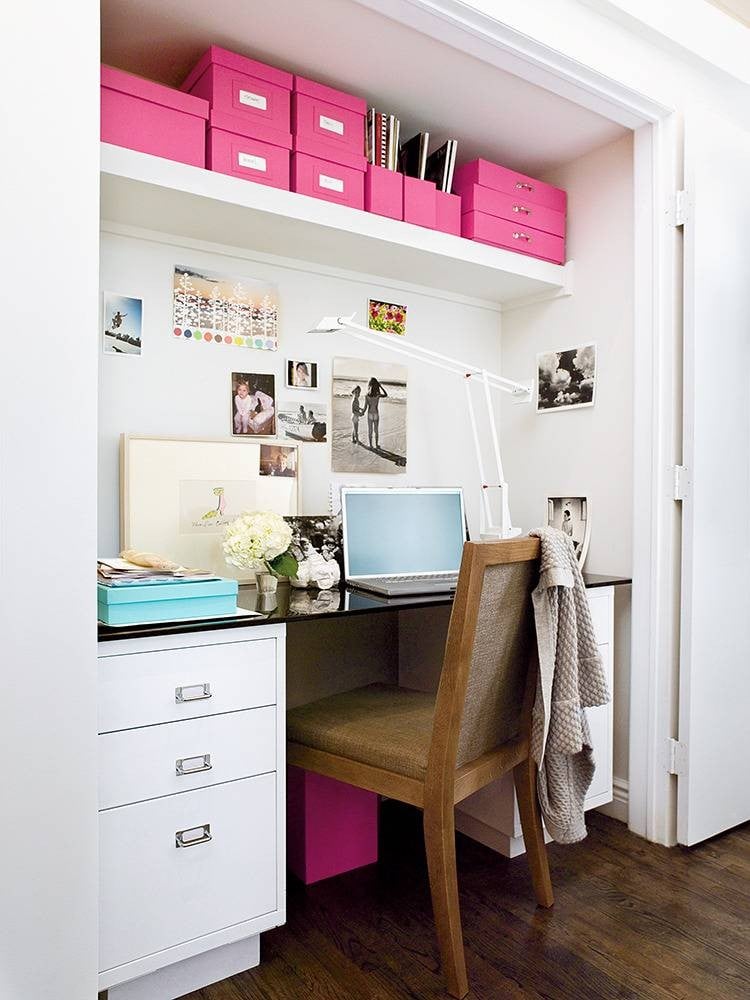
If searching for your keys is a part of your morning ritual, it’s time to break the cycle. Being organised is more than just a personality trait, it’s a lifestyle decision that’s easier to achieve if you stock your home with the right tools. These 15 clutter-busting essentials will make your days feel longer and less stressful. Cheers to that!
Idea: If you don’t want to hang a key hook, do yourself a favour and get a key catchall. Having a designated place to place your keys when you walk through the door will save you from the “running late” syndrome. Don’t be that person.
Get it: Making your own leather catchall is easier than you’d think. Follow this tutorial on A Beautiful Mess to DIY your own
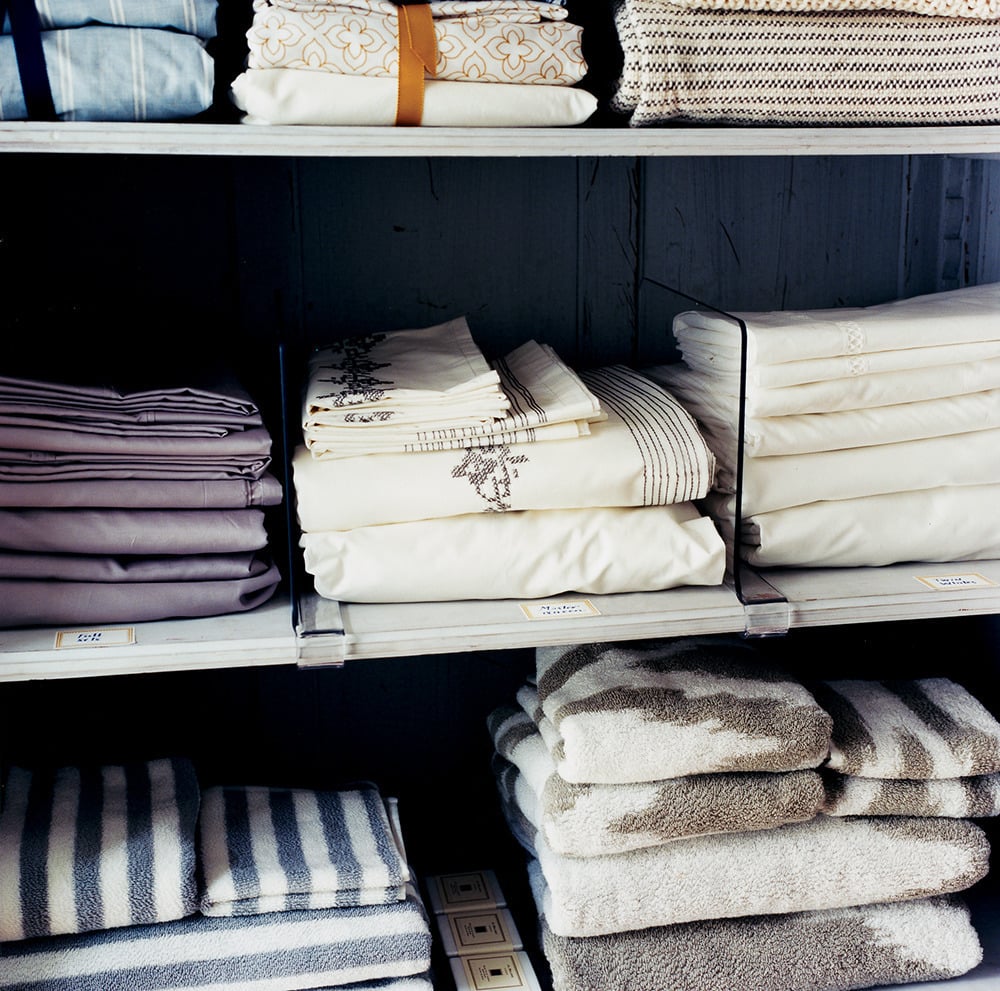 Image Source: Bahar Yurukoglu for Domino
Image Source: Bahar Yurukoglu for Domino
Idea: You know how it goes . . . You take the time to meticulously fold sheets and towels, and by the end of week, it looks like a bomb exploded in your linen closet. Here’s where clear shelf dividers come in. They’ll keep your stacks of linens in order without creating an eyesore.
Get it: Stock up on these acrylic shelf dividers to tame your most unruly closet.
Idea: Put your pantry on display by keeping dried goods and other treats in lidded glass jars.
Get it: You can get her kitchen jars at Ikea.
Idea: If you’ve seen these used to hang pots and pans, you’ll be happy to know that the idea translates for any room in the house. We love how Sugar + Cloth blogger Ashley Rose used one for above-the-bed storage and decor.
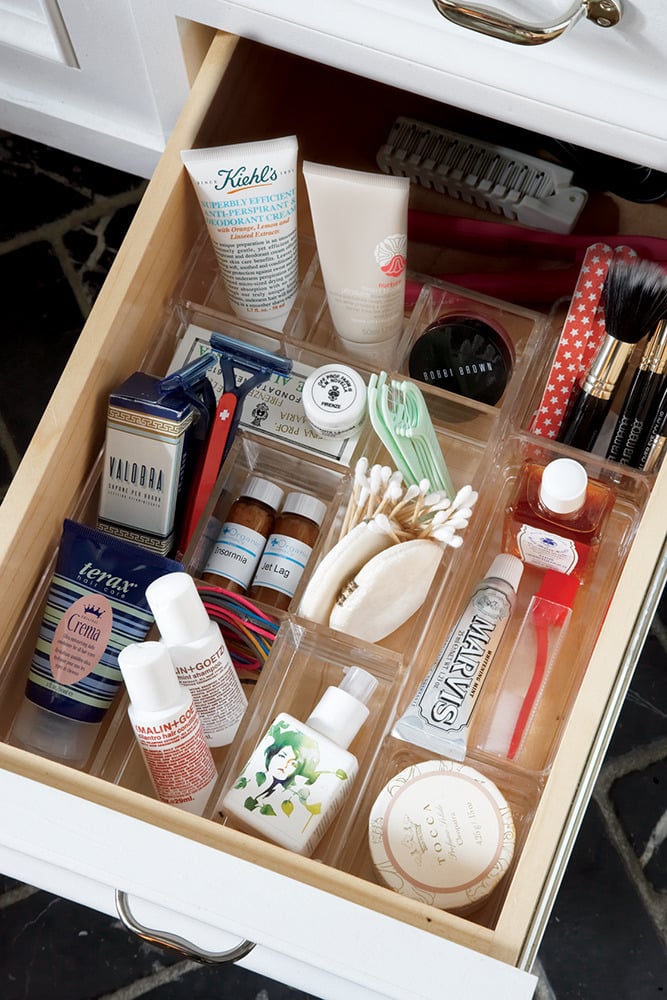 Image Source: Paul Costello for Domino
Image Source: Paul Costello for Domino
Idea: If shuffling through a drawer to find a tube of lipstick gives you anxiety, you’ll be amazed by the efficiency that a simple drawer organiser can offer.
Idea: Forget the space-saving allure of forgoing a knife block — we’re crazy about the fact that you can see the shapes and sizes of your most utilised knives while keeping them in reach.
Idea: It’s amazing how quickly a tray can corral clutter. Bonus points for turning the top of your toilet into an extension of your medicine cabinet (with the addition of a slim bud vase and framed picture, of course).
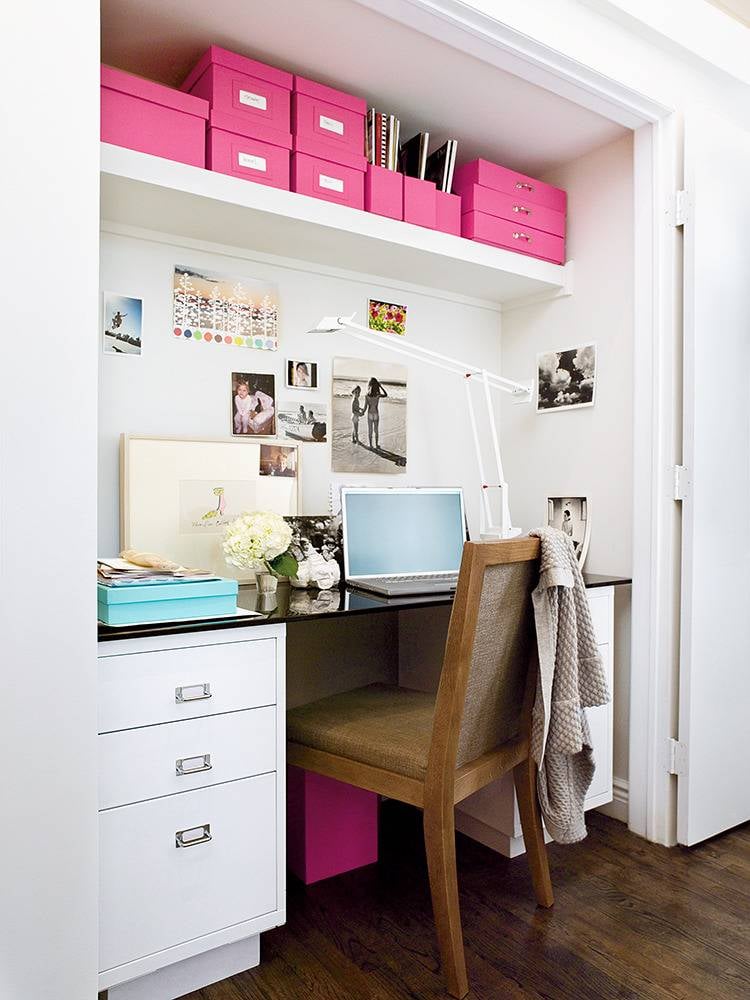 Image Source: Cahan Eric For Domino
Image Source: Cahan Eric For Domino
Idea: Labelled boxes are a great way to organise the things you want out of sight.
Idea: Sure, you can use them to hang a curtain, but they work wonders in making the most out of shelves. Follow Martha Stewart’s lead, and use them to organise kitchen items like pot and pan lids, trays, and cutting boards.
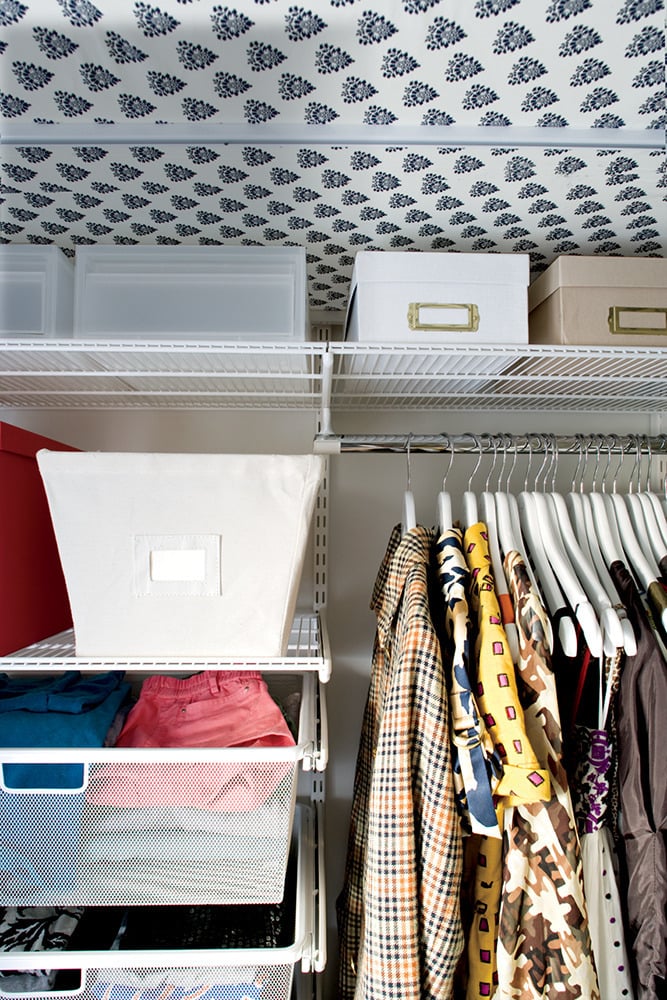 Image Source: Lesley A. Unruh for Domino
Image Source: Lesley A. Unruh for Domino
Idea: Whether you need more storage space for clothes or craft supplies, these wall-mounted mesh drawers allow you to customize your storage and easily see what you’re storing.
-
Makeup Brush Cups
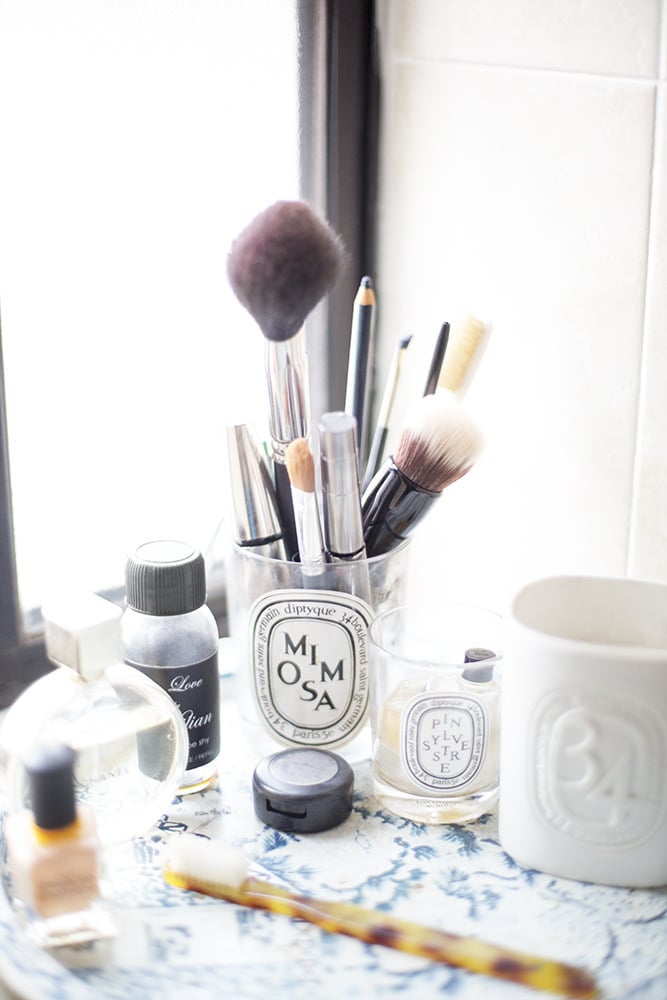
Idea: Instead of cramming makeup brushes into a messy drawer or makeup bag, keep them within easy reach in a stylish cup.
Idea: Whether it’s a drawer filled with neat rows of spices or a creative DIY that frees cabinet space, every organized cook seems to have their spice collection under control.
Get it: A Beautiful Mess has an easy-to-follow tutorial for making these nifty magnetic spice jars.
-
Clever Toilet Paper Storage
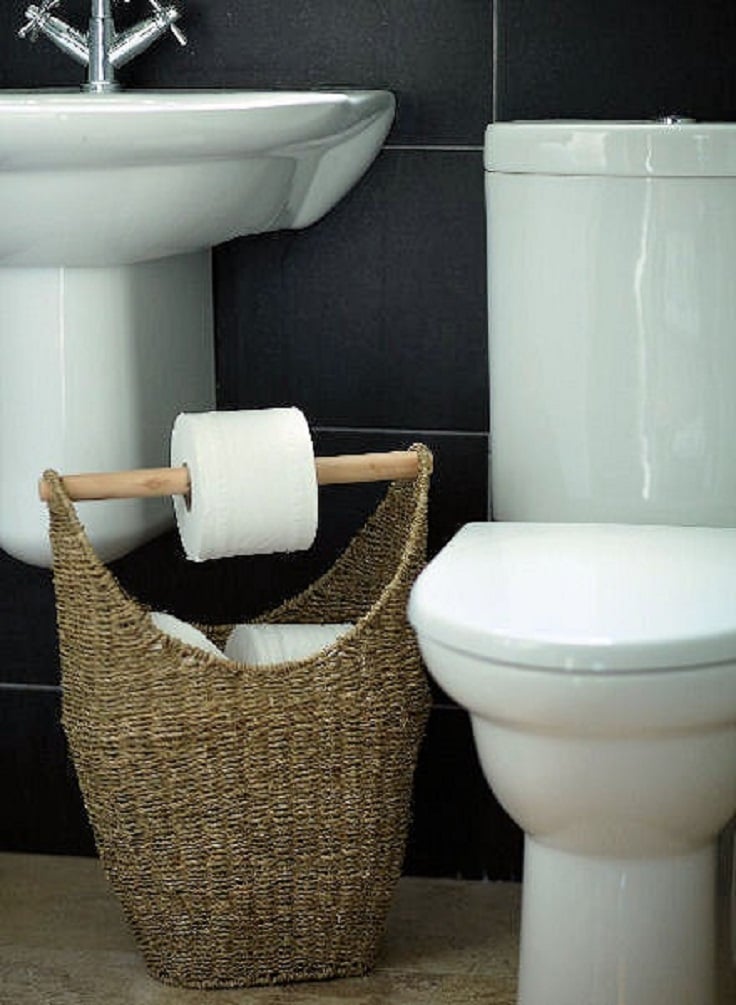
Idea: Running out of it when you need it is the worst, but stacking it in plain sight can cramp your bathroom’s style. Kill two birds with one stone by turning a basket into a toilet paper organiser and dispenser.
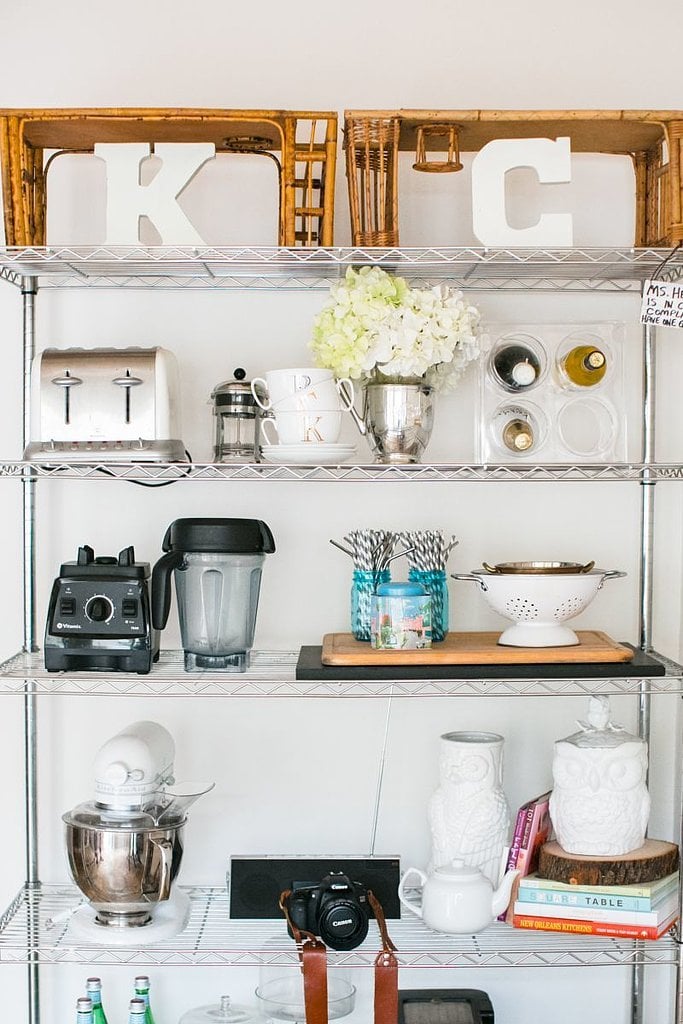 Image Source: Monica Wang for The Everygirl
Image Source: Monica Wang for The Everygirl
Idea: A lack of cabinet space doesn’t have to stop you from owning bulky appliances like KitchenAid mixers and high-powered blenders. Some of the cutest rentals we’ve seen use stainless steel shelves for stylishly organization, making it easy to keep everything within sight. The best part? You can extend them or shorten them for a customized height.
Get it: This shelving unit is a great starter package.
Comments (0)
14 June 2018
By portermathewsblog
via domain.com.au
If you’ve ever bought a heating appliance only to find it woefully inadequate for the task at hand, you need Christian Hoerning’s advice. A technical expert at EECA Energywise, he tells us how to stay toasty without getting burned by the end-of-month bill:
For larger rooms you want to heat regularly, it’s worth paying a bit more upfront for a fixed heater with lower running costs and more heat output than a small electric heater can provide.
Electric heaters may be enough for smaller rooms and rooms you only heat occasionally.
 Hang on the wall electric fires can be two or three sided and have floating shelves such as those in the Skope Trento Suite from The Fireplace. Photo: The Fireplace
Hang on the wall electric fires can be two or three sided and have floating shelves such as those in the Skope Trento Suite from The Fireplace. Photo: The Fireplace
Avoid unflued gas heaters (either portable or with pipes fixed to the walls) that release toxic fumes and moisture, and open fires that are draughty and inefficient.
Match the size of your heater to the space. An oversized or undersized heater won’t work effectively, and can cost more to run.
To minimise the environmental impacts, choose a heating option that uses renewable energy, like wood, wood pellets or electricity (which is about 80 per cent renewable on average).
 An Escea outdoor cooking fire completes this outdoor kitchen by Dravitzki Brown Architecture, it comes with an adjustable cooking plate for flame grilling. Photo: Escea
An Escea outdoor cooking fire completes this outdoor kitchen by Dravitzki Brown Architecture, it comes with an adjustable cooking plate for flame grilling. Photo: Escea
Choose the most efficient model for the job, and use and maintain your heater properly – for example, have heat pumps serviced and regularly clean the filters.
Fireplace: The expert advice
One reason wood fires have fallen somewhat out of favour is increasing clean air regulations in our cities. But wood is a renewable resource – and a real wood fire has romance on its side. So if you’re a sucker for the crackle and the ritual of stoking the logs, look for one that is clean air approved for urban areas.
“For large, open-plan rooms you can’t go past double-sided fireplaces as room dividers. They visually connect two spaces, and add intimate zones to the setting.” – Alex Hodge, Escea.
 Escea’s double-sided DX1500 gas fireplace adds its magic to both the kitchen and living space of this home, designed by Product X Architecture. Photo: Escea
Escea’s double-sided DX1500 gas fireplace adds its magic to both the kitchen and living space of this home, designed by Product X Architecture. Photo: Escea
“Electric fireplaces, using sophisticated LED technology that mimics flames with different effects and colours, are no longer confined to in-wall options. Products such as the Gazco Skope Outset fires can be installed as a two- or three-sided fire so they make a stunning visual centrepiece.” – Geoff Dunn, The Fireplace
“A fireplace in the bedroom is the ultimate luxury, but definitely a better option with gas due to its on/off button convenience and controllable temperature. No one likes to sleep in a room that’s too hot. Escea’s multiroom DX Series has the ability to duct heat into different rooms – a good option for bedrooms as 90 per cent of the heat is ducted, not radiant. – Alex Hodge, Escea
“A fireplace in an outdoor room will add value to your home and extend your living space. Fireplaces provide a central social hub and make alfresco dining a lot more inviting. Escea’s EF5000 outdoor gas fireplace is an easy-to-install option that doesn’t need a flue, so it’s great for balconies and roof gardens that have views you don’t want to obscure.” – Malcolm Burton, Stoke Fireplace Studio
 If you love the authenticity of wood fireplaces but live in the city, you’ll need one that’s clean air approved. Stovax Studio wood fires can be in-built or freestanding. Photo: The Fireplace
If you love the authenticity of wood fireplaces but live in the city, you’ll need one that’s clean air approved. Stovax Studio wood fires can be in-built or freestanding. Photo: The Fireplace
Other ways to heat
Sarah Moore from Rinnai says whole home heating (or central heating) is can be unusual, as most of us are used to spot heating just the living area. “Whole home heating allows you to have a warm, comfortable dry house and we have seen strong growth in this space over the last few years. We expect this trend to continue as more people understand the benefits of heating their whole home.”
Fan heaters are ideal for small spaces such as home offices or powder rooms that measure around 15sqm. Installed in a bathroom, they also reduce steam and should be turned on before you take a shower.
Wall mounted and perfectly quiet, convection panel heaters are a good choice for hallways and bedrooms. Choose one with a timer and an accurate digital thermostat.
Radiant heaters are for personal warmth; if you work from home in an open-plan space you could possibly do with one in the depths of winter but they will make no difference to the ambient temperature of the room.
Don’t forget to move the heat outdoors. A 2400W electric outdoor patio heater, for instance, provides heat for areas up to 10m away.
Comments (0)
11 June 2018
By portermathewsblog
via therealestateconversation.com.au

Buying your first property is hard, so let’s make it easier for you.
Congratulations! You have decided to take the plunge, you have done some reading on what the various responsibilities when it comes to being a homeowner, you have spoken to the bank and have an idea of how much you are able to afford.
These steps take some time so we are here to encourage you to take the next step in home ownership. We know it’s a little bit nerve wrecking and a little bit scary, but we have compiled some advice from our in house experts to help you with this exciting time!
Looking for affordability without compromising on location
For many of us, your first home is not going to be your forever home. We recommend taking a holistic approach to purchasing property. Even if you are going to be living in that property, look at it as an investment as well.
For those first homebuyers who do not want to compromise on space, you may have to look further out depending on your budget or look for townhouses or terraces. If you are looking to keep more of your lifestyle, an inner city apartment may be the apt living situation for you.
What we emphasise is buying smart and seeing your home purchase as more than just a living situation but a step in growing your portfolio. You might want to ask yourself “How much rent will I get for this apartment?” or “What has been the capital growth in the area over the last few years?”.
We think asking these questions will not only give you peace of mind if you have to move out and rent or sell your property, but it is also how many people start their property portfolio. The first one does not have to be picture perfect, but it helps if it is a sound investment.
Location and amenities
The building, home or internal features are not the only things that you should consider when you buy. Are you in a desirable school catchment zone, are there amenities or transport facilities planned in your area or has a new shopping centre been planned?
Looking at the amenities and area around you is particularly important, as they are great financial health indicators that the area you are looking to buy in has infrastructure and amenity to attract people to live there.
Look on suburb out from your dream location
Looking for undervalued suburbs next to the pricier areas is always a something we recommend to our first home buyers – over time, population growth and gentrification will mean that there will be capital growth in your area.
It’s always good to also look at areas with employment growth as this will increase demand for homes in that area. Finally, do your research. It takes time to go through all the listings in the area you love and view the various prices they get sold for but it’s all worth it when you know you are on to a great purchase.
Comments (0)
01 June 2018
By portermathewsblog
popsugar.com.au
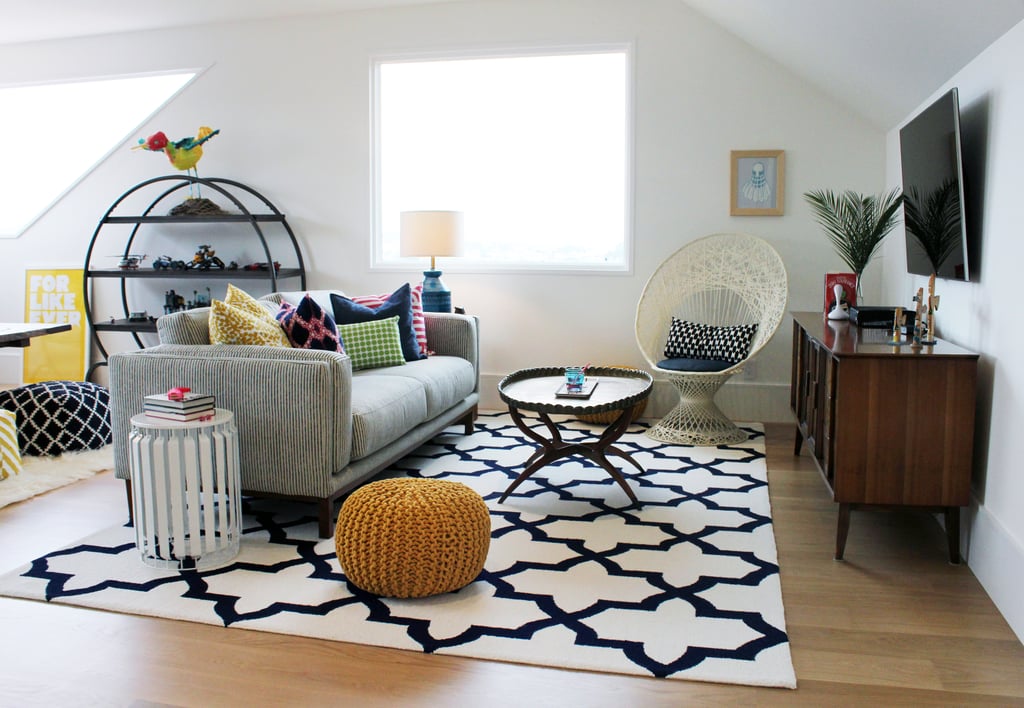 Image Source: POPSUGAR Photography / Lisette Mejia
Image Source: POPSUGAR Photography / Lisette Mejia
If the idea of getting your home company-ready is keeping you from hosting a dinner party or even your out-of-town in-laws, we can help. Sure, you could spend all day cleaning and decorating in anticipation, but who has the time? Here are the only things you really need to do before your guests arrive. Don’t worry — they are nothing but easy.
The Scent of Your Home
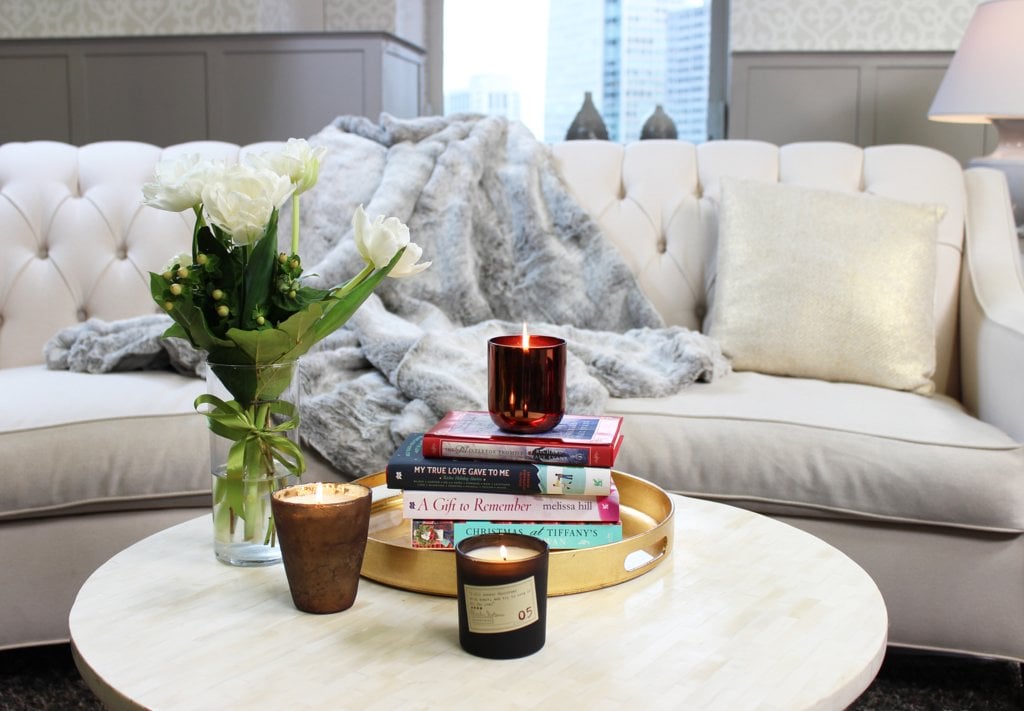 Image Source: POPSUGAR Photography / Brinton Parker
Image Source: POPSUGAR Photography / Brinton Parker
Decor isn’t the first thing guests
notice when they walk through your door — it’s the smell. Whether you’re
concerned about the fish you cooked the night before or your dog skipping a
bath — or worse, the scents you’ve become nose-blind to — put your
mind at ease by lighting a candle or simmering a small pot of citrus peels and
cinnamon sticks a half hour before guests arrive. We can’t get enough of these yummy-smelling candles.
A Well-Stocked Bar
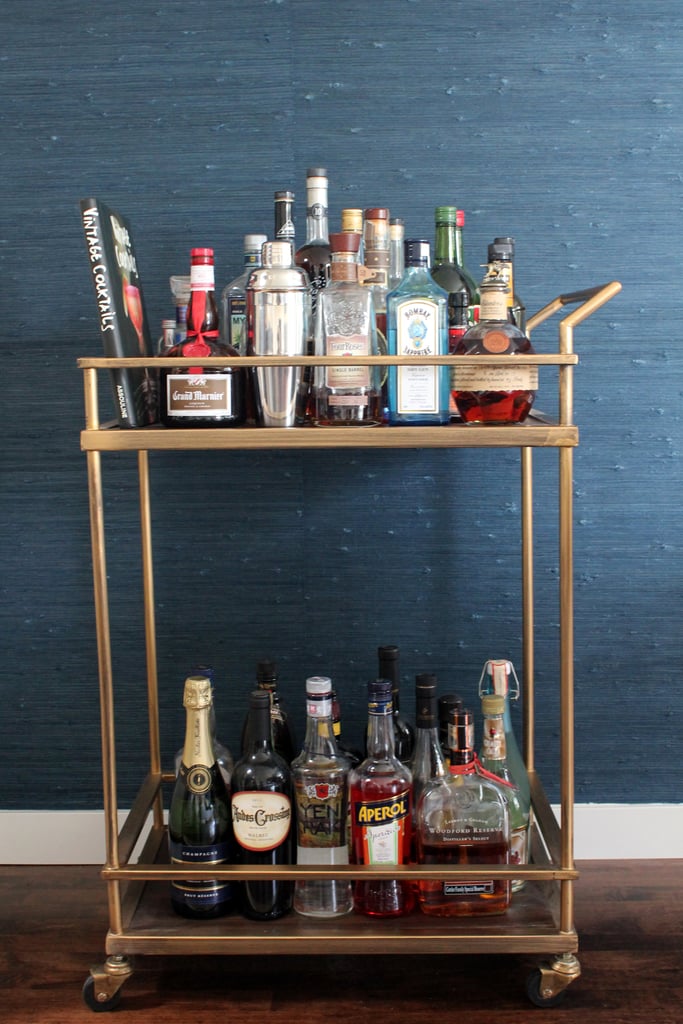 Image Source: POPSUGAR Photography / Lisette Mejia
Image Source: POPSUGAR Photography / Lisette Mejia
After greeting guests, the first
thing that you will want to do is offer them a drink. You don’t need to be full
service, but make sure you have the home bar basics covered.
Fresh Flowers
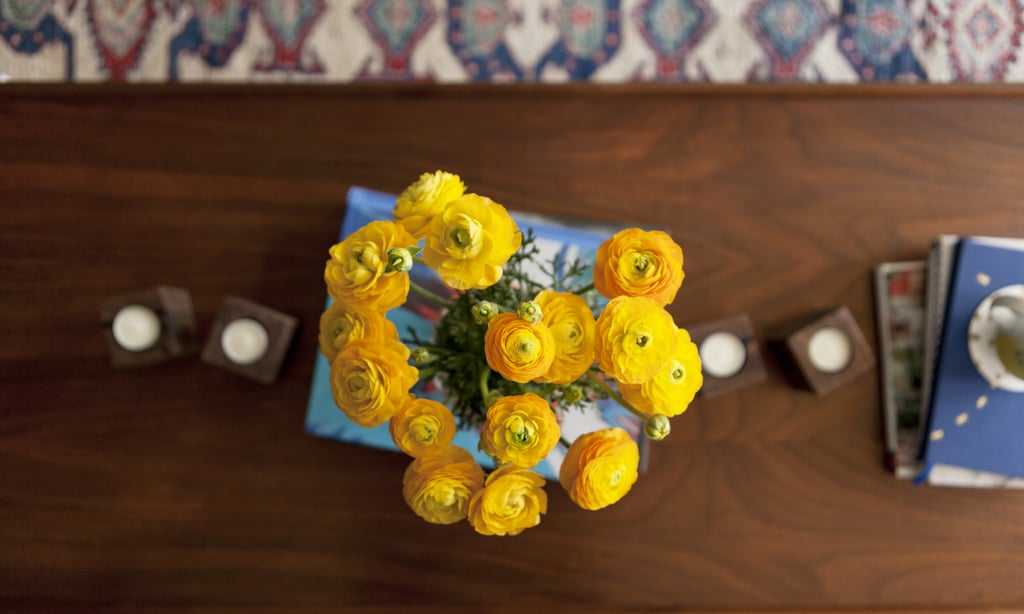 Image Source: POPSUGAR Photography / Mark Popovich
Image Source: POPSUGAR Photography / Mark Popovich
Flowers are the only decoration a
house really ever needs, no matter the occasion (although we feel pretty
strongly about candles too!). To get the most bang out of your buck, buy potted
flowers, like orchids. They may look delicate, but with proper care, they
will last for a month or longer.
The Lack of Clutter
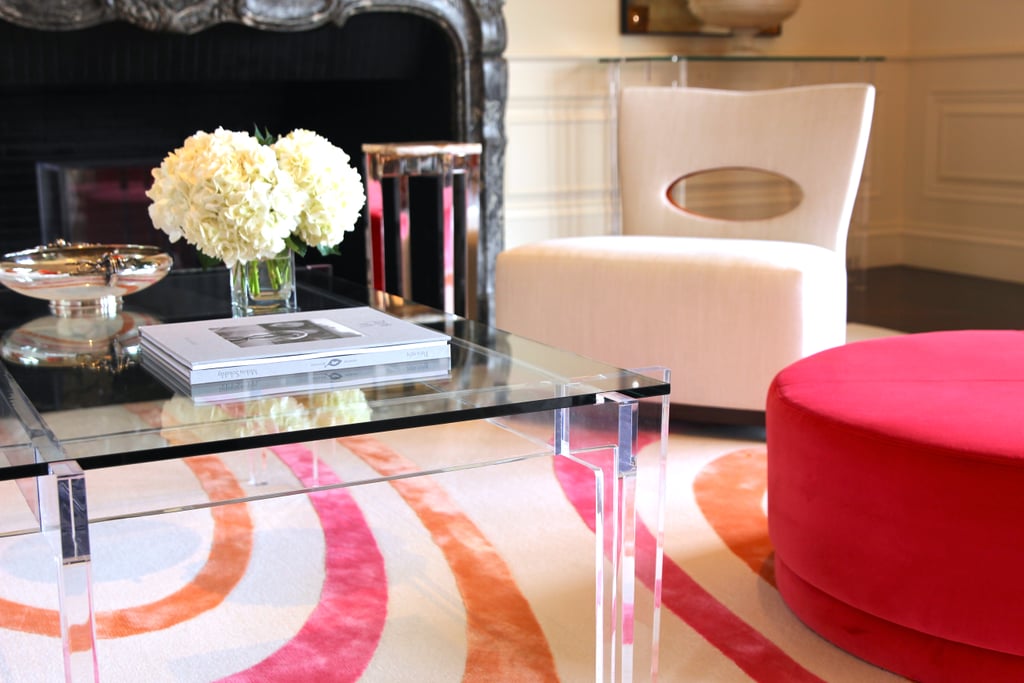 Image Source: POPSUGAR Photography / Grace Hitchcock
Image Source: POPSUGAR Photography / Grace Hitchcock
Even if you don’t have time to do a
deep cleaning, you can still organise your clutter. Get a tray or a set of
lidded boxes for each room and corral all the odds and ends — remotes,
keys, mail — in one place. Guests will feel relaxed in a space that
appears organised, even if it is just for show!
A Tidy Bathroom
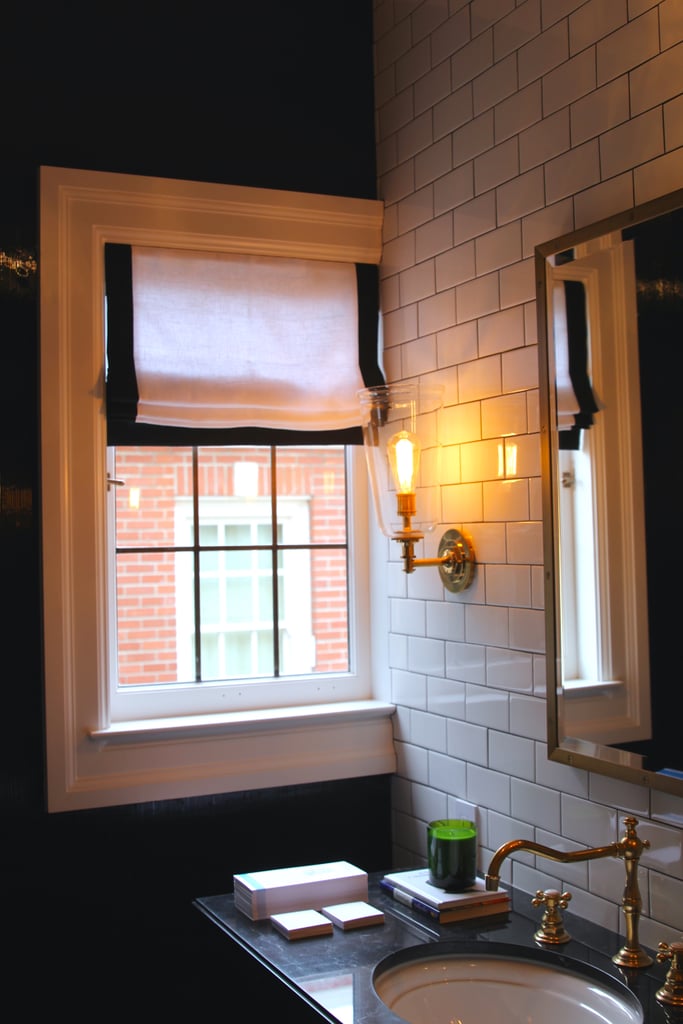 Image Source: POPSUGAR Photography / Grace Hitchcock
Image Source: POPSUGAR Photography / Grace Hitchcock
Before guests arrive, make sure your
bathroom has clean hand towels and enough toilet paper. Extra points for wiping
down surfaces and lighting a candle
An Organised Entryway

Image Source: POPSUGAR Photography / Lisette Mejia
Not only is it the first place and
last place that your guests will see, your entryway is also where they will be
dropping their coats and bags. Depending on how much room you have, add a coat
rack, umbrella stand, and a place to sit while taking shoes on or off.
Comments (0)
01 June 2018
By portermathewsblog
popsugar.com.au
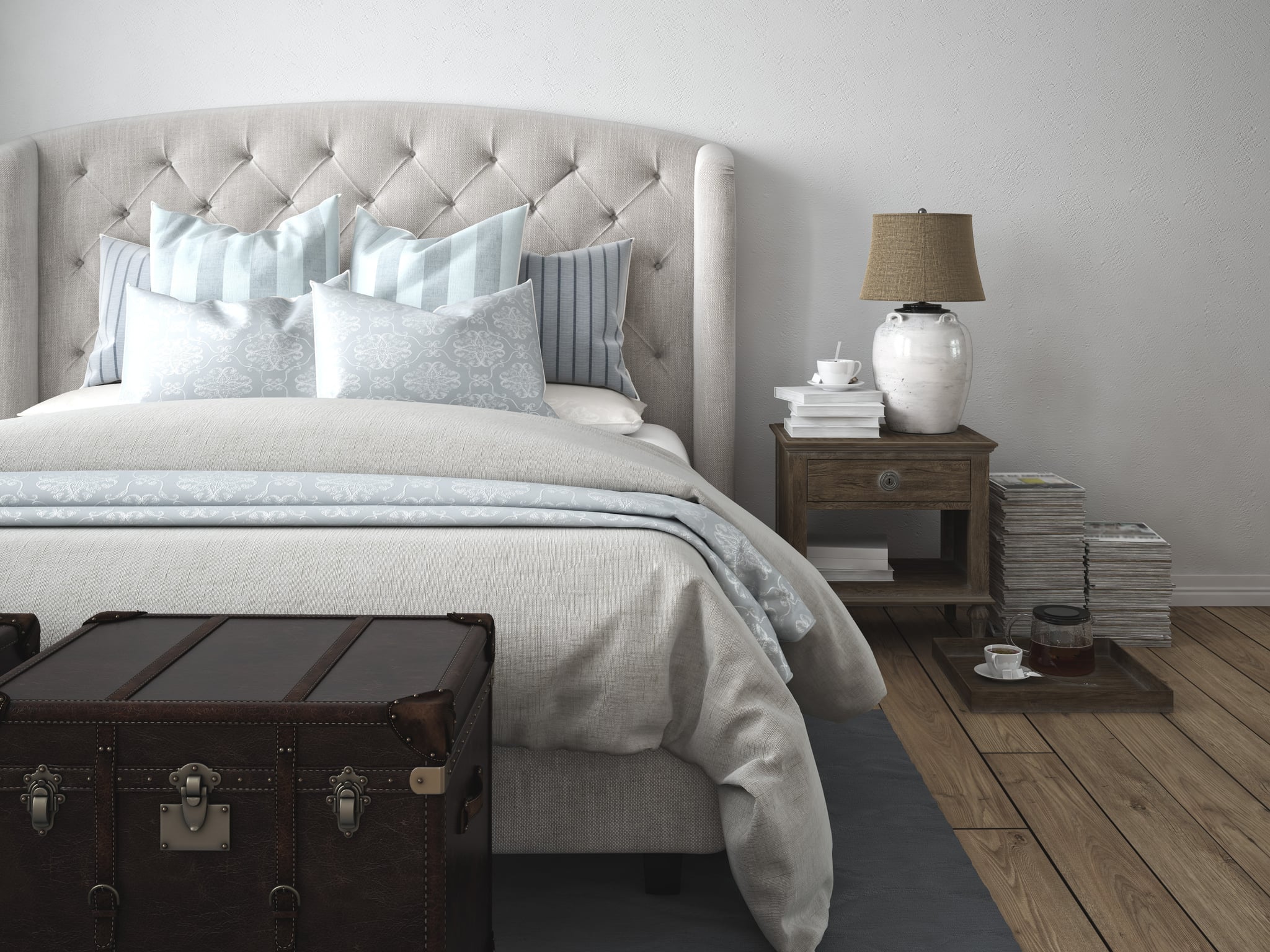
You’ve worked hard to make your bedroom a welcoming sanctuary, but beneath its pretty facade, there could be serious health hazards lurking. Read on to uncover the bedroom dangers that could be harming you while you sleep and learn what you can do about them.
Air Quality
Let your bedroom air out by opening the windows as weather permits each day. It will refresh the space and void it of noxious gasses that can build up indoors over time.
Not only will a potted plant or two beautify your bedroom, but they will also release oxygen and help filter out harmful compounds emitted by everyday cleaners, detergents, and fragrances. Studies show that these 10 houseplants can even improve your health.
A quiet air filterer is an efficient way to purify your bedroom of dangerous pollutants and agitating allergens like dust mites, pollen, and pet dander.
Cleanliness
Even with an air filter, it’s important to keep dirt and dust mites at bay by cleaning regularly. Pay special attention to areas that tend to accumulate them the most, including the floor, baseboards, windowsills, and upholstery. Even “clean” people often forget to wash these eight things.
The amount of dead skin, grime, and dust mites that collect on your bedding is rather horrifying and can cause problems from asthma to acne. The good news is it’s easy to get rid of by cleaning your sheets, duvet, and pillowcases every 1-2 weeks. Case in point? This horrific study reveals the horrific result of not washing your pillows for just two years.
Keep moisture from getting stuck in your bedding and mattress and causing problems by airing it out briefly before you make the bed in the morning. Pull back the sheets, fluff out the pillows, and give everything a few minutes to dry before they’re closed back up for the day.
Hidden Toxins
Bad news for memory foam pillow-lovers. These ergonomic head rests often outgas dangerous Volotile Organic Compounds or VOC’s that can cause headaches, nausea, and eye irritation. You don’t want your face, mouth, or nose anywhere near them. Swap them for pillows filled with organic materials, like wool or feathers, or at least a safer foam like a natural latex foam.
- Flame Retardant-Free Mattress
Considering how much time you spend in close proximity with your mattress each day, it’s a no-brainer to make it a safe one. While many products, including mattresses, were once doused in flame-retardant chemicals, it’s come to light that these chemicals are doing much more harm than good. They’ve been linked to types of cancer, birth defects, and fertility issues. Scary stuff, and reason to seek out an organic, chemical-free mattress.
In small apartment or studio, space is at a premium and spaces may have to do double duty – but do your best to keep office equipment away from your bed, especially if it’s running all the time. Research has shown that laser printers emit tiny particles into the air that may be dangerous.
Comments (0)